#Uranium Mills year
Text
There are many reasons to not go in for nuclear power and some reasons to go in for it after all.
Against:
1. It takes so many damn years to build. We'll be 20 years on and far past our carbon budget. That HUGE (they are insanely expensive) amount of money could have been spent on something more scalable. Nuclear is not scalable. Wind and solar are extremely scalable (and cheaper every day). One reason is that renewable plants (e.g a mill) are small and a repeated construction. Expertise for constructing renewables is widely available, nuclear plant construction expertise is in short supply. Counter (a bit weak): even if it takes ages to build, still, we're not on schedule for non-fossil fuel use anyway, so it will probably unfortunately still be relevant in twenty years.
2. A nuclear plant is a national security risk. One: in times of war. 2: in times of natural disaster. No counter to that except: surely war won't be THAT bad and the failsafes will always be enough.
3. Sourcing the concrete, steel and uranium that goes into such a plant isn't good for the environment. Nor is uranium renewable. Current stocks and use would provide us with 130 years of energy production. Build more plants, that number goes down. Counter: producing any power plant requires mining and transport - coal plants and renewables do too, for example.
4. Nuclear waste is a non-negligible problem. There are (war) incentives NOT to reduce waste. Even when waste is minimised, waste remains. Highly dangerous waste can kill people for longer than any society on earth has ever survived. 500.000 years... So no society can reasonably take responsibility for it. When nuclear waste is stored and then spills (as has happened in Germany) the state must pay billions in taxes to clean it up. Storage is difficult. There are NO permanent storage sites ready in all of Europe. There's about 180 plants now that have ran for decades. No permanent storage. If a company is made responsible for a nuclear plant, they tend to pay out to their shareholders one year and claim not to be able to take care of the waste for fear of bankruptcy the next - or they've already declared bankruptcy. Literally happened here. There are no incentives to deal responsibly with the waste for companies. Germany is projected to have to pay hundreds of billions of euros for permanently storing all the waste they've still got lying around at interim sites. Once again, money which might have been spent on scalable renewable production. 500.000 years... this a storage solution must last for 500.000 years. Ever seen concrete last so long... ?
5. We're seeing nuclear crowd out renewables RIGHT NOW IN REAL TIME in politics in the Netherlands and the UK. The money (and project managemeny time) really cannot be spent twice.
For:
6. Fossil fuels have done way more damage to the environment so far. Nuclear is preferable. In fact, 20% of European electricity and 10% of total energy is provided by nuclear power plants. 180. Plants. All renewables combined provide 17%. No real counter to that: they really do produce a lot of electricity without emitting greenhouse gases! Importantly: they don't need a lot of space. (Nuclear on the whole causes about as many greenhouse gases as wind energy equivalent and even slightly less than solar. Forty times less than coal.)
7. Nuclear is a proven way to produce a LOT of power. Weak counter: this makes it a liability in the electricity grid and incentivises less maintenance to minimise downtime (if no other plants can take over - generally not if they're too big. This makes them unreliable, just like renewables). Counter to that counter: much smaller (scalable) plants are being developed. Counter to that counter: they're experimental. The thorium reactors thay produce shorter lived waste are also experimental. I.e. it will take decades before we can build operational versions. (BUT! there's an ENORMOUS amount of thorium on earth, which is extremely important. Waste is much less problematic and meltdown impossible)
8. Nuclear plants that are not traditional baseload only plants and have load following capabilities can play a role in managing the ups and downs of renewables on the grid. Counter: even when built for this purpose, it's impossible to make enough money to pay for the construction and management and deconstruction and waste management by only running these plants as buffer. This is a problem because companies are asked to construct the plants, not the state. Counter 2: in a hybrid system with renewables the grid operator actually has to PAY OFF (millions) the nuclear plant to stop it producing so much. It's a liability in a hybrid system with renewables.
Final conclusion:
CURRENT nuclear power plant construction does not play well with the transition to renewables because there is no way in this financial system to use its production as a buffer, the state cannot produce the plants because there is a lack of expertise, companies cannot afford to run the plant as buffer and cannot be trusted and ideologically and politically nuclear power is proposed as an alternative to renewables instead of a complement which cuts into the much-needed financial resources necessary for renewable expansion. It is slow to build and badly scalable. We need speed and scalability considering our climate deadline. There is no permanent solution for waste and takes billions of euros to store right now already. Uranium is a scarce and non-renewable resource. Existing plants impede the transition to renewables (there is no need). They form a liability for continued production when it comes to short term production for the grid when needing maintenance and long term liability for energy production when they need to be decommissioned (France is dependent for 3/4ths on many plants that must be decommissioned at the same time). Nonetheless, existing plants are preventing a large amount of carbon emissions. Nuclear can be a useful element to the energy mix, and requires a lot less space than renewables. If innovations in scalable, smaller plants with increasingly better business cases, faster build times and ability to offload production to each other, there may be serious synergy with renewables. Still, these will be useful for 50-100 years until uranium runs out. Problematic, not just because it leaves us with expertise and infrastructure that will have no fuel, but also because we need to transition FAST and it's uncertain in how many years this technology will be operational. Thorium would be a solution to a lot of problems, but that is also decades away from operation. Putting money into research and test reactors is a priority. Decommissioning existing plants early would be stupid even if it would remove their contributions to transition intertia and the as of yet unsolved and increasing waste storage problem.
37 notes
·
View notes
Text
The “death map” tells the story of decades of sickness in the small northwest New Mexico communities of Murray Acres and Broadview Acres. Turquoise arrows point to homes where residents had thyroid disease, dark blue arrows mark cases of breast cancer, and yellow arrows mean cancer claimed a life.
Neighbors built the map a decade ago after watching relatives and friends fall ill and die.
Dominating the top right corner of the map, less than half a mile from the cluster of colorful arrows [...] : 22.2 million tons of uranium waste left over from milling ore to supply power plants and nuclear bombs. “We were sacrificed a long time ago,” said Candace Head-Dylla, who created the death map with her mother after Head-Dylla had her thyroid removed and her mother developed breast cancer. [...]
Beginning in 1958, a uranium mill owned by Homestake Mining Company of California processed and refined ore mined nearby. The waste it left behind leaked uranium and selenium into groundwater and released the cancer-causing gas radon into the air.
State and federal regulators knew the mill was polluting groundwater almost immediately after it started operating, but years passed before they informed residents and demanded fixes. [...]
---
Uranium mining and milling left a trail of contamination and suffering, from miners who died of lung cancer while the federal government kept the risks secret to the largest radioactive spill in the country’s history. But for four decades, the management of more than 250 million tons of radioactive uranium mill waste has been largely overlooked, continuing to pose a public health threat. [...] At Homestake, which was among the largest mills, the company is bulldozing a community in order to walk away. Interviews with dozens of residents, along with radon testing and thousands of pages of company and government records, reveal a community sacrificed to build the nation's nuclear arsenal and atomic energy industry. [...]
In 2014, an EPA report confirmed the site posed an unacceptable cancer risk and identified radon as the greatest threat to residents’ health. Still, the cleanup target date continued shifting, to 2017, then 2022. Rather than finish the cleanup, Homestake’s current owner, the Toronto-based mining giant Barrick Gold, is now preparing to ask the Nuclear Regulatory Commission, the independent federal agency that oversees the cleanup of uranium mills, for permission to demolish its groundwater treatment systems and hand the site and remaining waste over to the U.S. Department of Energy to monitor and maintain forever. Before it can transfer the site to the Department of Energy, Homestake must prove that the contamination, which exceeds federal safety levels, won’t pose a risk to nearby residents [...].
Part of Homestake’s strategy: buy out nearby residents and demolish their homes. [...] Property records reveal the company had, by the end of 2021, purchased 574 parcels covering 14,425 acres around the mill site. This April, Homestake staff indicated they had 123 properties left to buy. One resident said the area was quickly becoming a “ghost town.”
---
Even after the community is gone, more than 15,000 people who live nearby, many of them Indigenous, will continue to rely on water threatened by Homestake’s pollution. [...]
At the state level, New Mexico regulators waited until 2009, 49 years after first finding water pollution, to issue a formal warning that groundwater included substances that cause cancer and birth defects. [...] Other uranium mines and mills polluted the area’s main drinking water aquifer upstream of Homestake. [...]
More than 500 abandoned uranium mines pockmark the Navajo Nation [...].
Leaders of communities downstream from Homestake, including the Pueblo of Acoma, fear that wishful thinking could allow pollution from the waste to taint their water. The Acoma reservation, about 20 miles from Homestake’s tailings, has been continuously inhabited since before 1200. Its residents use groundwater for drinking and surface water for irrigating alfalfa and corn, but Donna Martinez, program coordinator for the pueblo’s Environment Department, said the pueblo government can’t afford to do as much air and water monitoring as staff would like. [...]
Most days, Billiman contemplates this “poison” and whether she and Boomer might move away from it [...]. “Then, we just say ‘hózho náhásdlii, hózho náhásdlii’ four times.” “All will be beautiful again,” Boomer roughly translated. [...] Now, as a registered nurse tending to former uranium miners, Langford knows too much about the dangers. When it’s inhaled, radon breaks down in the lungs, releasing bursts of radiation that can damage tissue and cause cancer. Her patients have respiratory issues as well as lung cancer. They lose their breath simply lifting themselves out of a chair.
---
Text by Mark Olalde and Maya Miller. “A Uranium Ghost Town in the Making.” ProPublica. 8 August 2022. [Some paragraph breaks and contractions added by me.]
85 notes
·
View notes
Photo
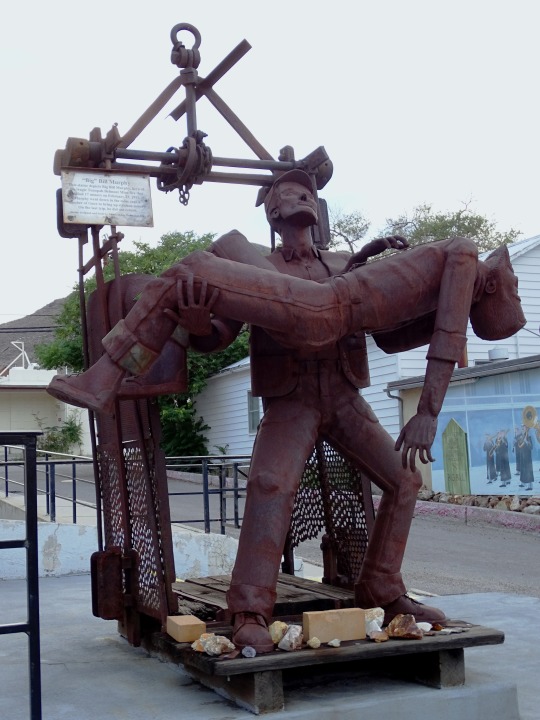
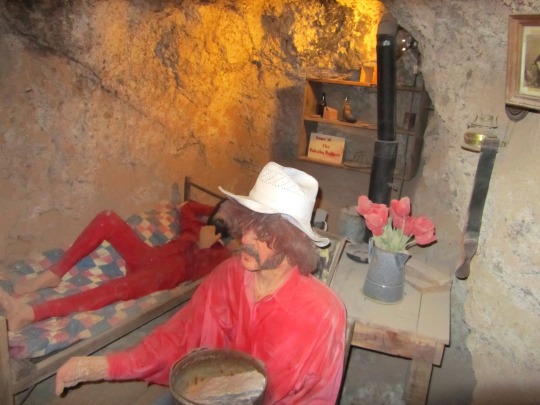

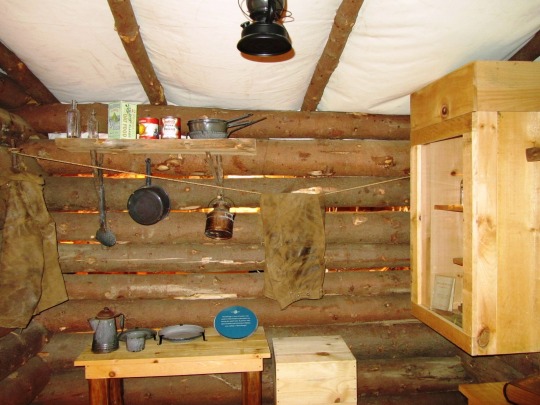



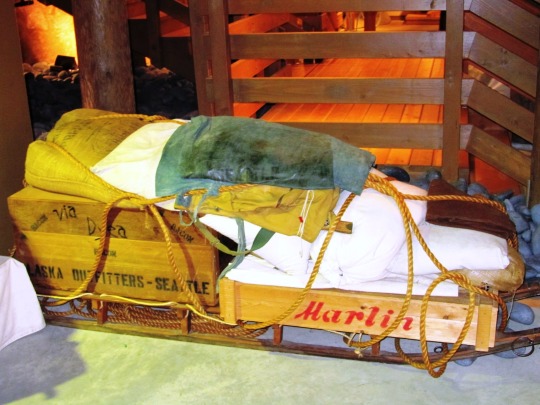
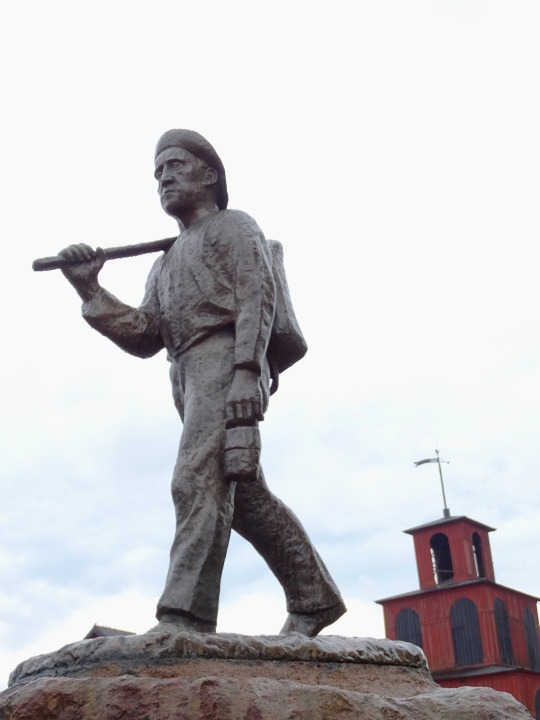
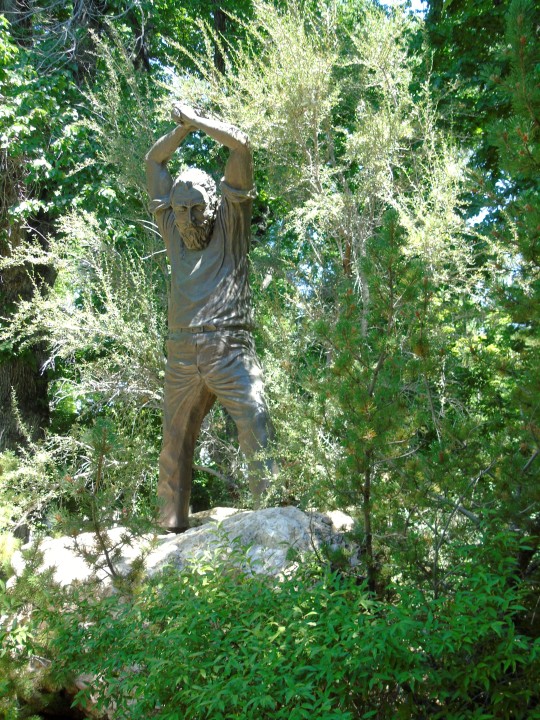
Talk Like a Grizzled Prospector Day
Talk Like a Grizzled Prospector Day commemorates the start of the California Gold Rush, which began on January 24, 1848, when James Marshall discovered gold while building a saw mill for John Sutter, near what is now Coloma, California. The day has its roots in International Talk Like a Pirate Day, and was inspired by Prospectors Day, which was once held at Knott's Berry Farm each year on January 24. It also was inspired by an episode of the Simpsons with the following exchange:
Bart: That ain't been popular since aught-six, dagnabbit. Homer: Bart, what did I tell you? Bart: No talking like a grizzled 1890's prospector, consarn it.
Common examples of characters talking like grizzled prospectors in popular culture include Dallas McKennon narrating Disneyland's Mine Train Thru Nature's Wonderland and Big Thunder Mountain, Gabby Hayes—both drunk and sober—in many Western films, Gabby Johnson in Blazing Saddles, Will Ferrell as Gus Chiggins on Saturday Night Live, and Walter Huston in The Treasure of Sierra Madre.
Prospectors first came to the Sacramento Valley after Marshall found flakes of gold in the American River near Sutter's Mill, at the base of the Sierra Nevada Mountains. At the time there were less than 1,000 non-native inhabitants in California. Newspapers began reporting the discovery of gold, and by August, 4,000 miners had descended on the area. The first people that came from outside of the territory came by boat, and arrived from Oregon, the Sandwich Islands—soon to be called the Hawaiian Islands, Mexico, Peru, China, and Chili.
In December 1848, President James K. Polk announced a report by Colonel Richard Mason which spoke of the abundance of gold in California; this prompted more prospectors to travel to the territory. Throughout 1849, thousands arrived, either traveling by sea or over land, and became known as '49ers. Mining towns popped up in the area, and with them came shops, saloons, and brothels. Many mining towns became lawless, and San Francisco became an important city in the territory. By the end of 1849, the non-native population had swelled to 100,000. The Gold Rush helped California gain statehood in 1850, and gold discovery peaked in the state in 1852. In all, more than 750,000 pounds of gold were extracted during the Gold Rush.
The implication of a grizzled prospector is of one who has stayed so long searching for gold that their hair has turned gray. Some prospectors refused to quit the profession and continued to live in the Western territories. So, when Bart Simpson mentioned a grizzled prospector from the 1890s, he was referring to a prospector that had stayed more than forty years after the Gold Rush happened, still trying to find gold, or other commodities such as silver, oil, radium, and uranium. Besides a gray beard, the stereotypical grizzled prospector had faded clothes, missing teeth, a pickaxe, and a mule. They had bouts of gold fever, and were suspicious of whoever came close to their claim.
How to Observe Talk Like a Grizzled Prospector Day
Celebrate the day talking like a grizzled prospector. Here are a few words prospectors commonly used, that you could use today:
Dadburn: to curse; e.g.: "Dadburned boll weevil done 'et my crop!"
Hornswoggle: to embarrass, disconcert, or confuse; e.g.: "I'll be hornswaggled!"
Consarn: the entirety of something, also a curse word.
Dumbfungled: all used up; e.g.: "This claim is dumbfungled! There's no gold left!"
Bonanza: a mine with lots of gold.
Borrasca: a mine with no gold.
Baby buggy: wheel barrow.
Muck: to dig with a shovel.
Powder monkey: a miner who used dynamite to make holes.
Johnny Newcome: a miner new to camp.
Blackjack and saw bosom: coffee and bacon.
Paydirt: land rich in gold.
Panned out: if they had found gold while sifting through dirt with a mining pan, then things had "panned out."
Flash in the pan: something shiny in pan that turned out to be nothing, or just a small piece of gold.
Stake a claim: claim a piece of land as your own as a place to search for gold, must stake the land with wooden stakes when you arrive.
The day could also be spent watching films such as The Treasure of Sierra Madre, or old Western films starring Gabby Hayes. A visit to the Sutter's Mill replica and the Gold Discovery and Visitor Center in Marshall Gold Discovery State Park could also be planned. The days' Facebook page could also be explored.
Source
#Calico Ghost Town#California#Talk Like a Grizzled Prospector Day#travel#USA#NationalTalkLikeAGrizzledProspectorDay#24 January#vacation#original photography#sculpture#public art#tourist attraction#landmark#Sweden#Falun Mine#Gruvabetaren by Helge Zandén#Nevada#Carson City#Tribute to Nevada Miners by Greg Melton#Big Bill Murphy by Adam Skiles#Tonopah#Klondike Gold Rush - Seattle Unit#Seattle#Washington
32 notes
·
View notes
Text
Warehouse AU Lore Dump: Karnak, His Backstory, and The Warehouse-
I've been working out a double reality scenario for Karnak, where he exists in the 'living world' (the fall fair) and the 'afterlife' (the warehouse). As I came up with his backstory, I knew I wanted him to have firm roots in the living world, so I allowed him a few interactions building up to the Wonderville and Family-Friendly Mode we see in the show.
I never really saw Karnak as the traveling type (unlike the week-long fairs that exist where most everything gets packed and moved when the fair leaves)... But also, I wouldn't truly be able to explain why Virgil had been chewing on Karnak's power cord for two years if the fair packed up and moved constantly (I doubt the fair would take the rat... unless Virgil was just that spiteful and found his way in the loading truck anyhow. I wouldn't put it past him).
Uranium is a small town- there are probably a few run-of-the-mill stores amongst the few houses and St. Cassians. Karnak would certainly be an odd item out, especially being able to read death fortunes. So, what did I do? I sat him in a 'mom and pop' shop before throwing him into a family circus act as a luring attraction. (Which led to him getting picked up by Wonderville).
Besides, I always found it odd that there was a full stage in a warehouse. I never figured there would be, unless there was a driving force behind it... and every circus needs a performance space, so there. (Plus, the son's ring of fire in KARNAK! Chapter 3 I threw in to mark the stages' turntable).
Wonderville seems to be a lazy company- they wouldn't go out of their way to remove something complex... like the stage. So, the stage stays, Karnak stays when he's not needed, and stuff piles in the warehouse around it all.
Double Reality input below the line:
Okay, so now we're at the double reality:
Up until one 'living world' year before the Cyclone accident, Karnak lives solely in the living world- 1 week at the fair, and 51 weeks in the warehouse. Emotions are odd things (and it's clear that he has them, to an extent. Annoyance is still an emotion... which is something sarcasm stems from. Karnak is nothing if not sarcastic).
After an incident [KARNAK! Chapter 4] causes him to short circuit (or for lack of better term, lose it), the 'time loop' of the warehouse is created. Time works differently here. A month can pass in the warehouse, and a full year can pass in the living world. (An example from the show would be during the final song's Penny Lamb slideshow, where we see Penny's full life in a matter of maybe 30 seconds).
It was during this one 'living world' year that he created his favorite project- and it was complete (mostly) before he was pulled for the fall fair where he read some choir's fortunes and they died on a roller coaster. (Shame).
The moment the dead choir stepped in the warehouse, the 'time loop' became 'the afterlife.' Time is still odd here. The events of RTC happen, and that's where my AU begins- in the aftermath of Karnak dying too early (He did say in a little over an hour... and the show is an hour and a half... which is not just a little), and the choir picking the pieces up after Sugarcloud.
Anyways, here are some rules about the double reality:
Karnak still exists in both. (Albeit a little differently now- he still did technically die, but now he IS the warehouse... or rather, in the electrical system). His box still exists, short-circuited and all.
Anything moved in the warehouse by the choir in the afterlife, WILL NOT show up as moved to the living world.
Anything moved in the warehouse by someone living, WILL show up moved in the afterlife.
The doll is the anomaly to this rule (there will be another post on this), and will show up moved to all, no matter who moves it.
Karnak's box is also an anomaly (Will probably be in the same post as the one mentioned above).
If an object in the afterlife drops and makes a sound, it will still make a sound to the living, which could not be traced back to the object.
As mentioned before, time acts differently in the afterlife... which might end up being semi-important to some scenes.
#ao3#ride the cyclone#the amazing karnak#worldbuilding#brain dump#TwistTheScript's Warehouse AU#my fanfiction#fanfiction
3 notes
·
View notes
Text
Statement of Jeremiah Gunn
Concerning: The abandoned asylum near Sellafield
Statement taken: December 26th, 1960
Transcription by: Jonathan Sims, Head Archivist, Magnus Inst. London (1818)
Statement begins....
It’s not like I expected it. I know Windscale was only a few years ago but they don’t tell you these things only take a few hours to really fuck up the environment. That’s... Not why I’m here, no, but I felt like it was important to mention. The asylum had been built with lead liners in the walls just in case a nuclear disaster ever happened and it was a good idea... Unfortunately, it wasn’t in all of the walls, just in the ones around the administration and staff areas. The patients were left completely exposed. Something about the budget cuts or something. Typical...
Anyway, I was sent into the asylum to see if there was anything salvageable from the site. Turned out to be a big risk on their part and a big waste of time on mine. There was nothing there that didn’t end up glow-in-the-dark. I wish I hadn’t gone. I wouldn’t have the scars or the nightmares... Surprisingly though, I didn’t end up with any trace of radioactivity in me. They were still there, you know. The patients. They didn’t get out of there. I don’t think they wanted to and yes, I realize that sounds really weird but it’s true. They were alive in there even after the three years it’s been since the disaster. They were really messed up and I’m almost positive they’d started resorting to cannibalism but they were still them.
Without anyone there to maintain the building it started to deteriorate. Water damage in the ceiling, floors starting to chip, you know. The usual things that start happening when council buildings aren’t being kept up like they should. Anyway, I was going through one of the hallways, which I hated because it was pitch dark in there and it just felt like a horror film waiting to happen, and I could hear something scratching. Like, I tried at first to convince myself that it was a rat or something but it was obviously way too big. I wanted to run but I looked at my timer and I still had twenty minutes until I could leave. A rep from the company I had been hired by was waiting outside and if I came out early without anything to show for it I wasn’t getting paid. I needed the money and yeah, it was worth possibly getting murdered over.
I looked through the little window that was in the door that the scratching was coming from and that’s when I saw them. About twenty people, clothes manky and all of them looking grey and awful, milling about in what looked to be a patient’s common area. The scratching was coming from a very large man who was propped up against the door, his limbs missing, cut off at the base. The scratching sound was made by him rubbing his face against the door, his skin thick and leathery like a bad sunburn. I don’t know if they saw me or not and I don’t bloody care. I went back to the entrance, waited by the door until the time ran out, and I got the hell out of there.
I told everyone I could about that place but people think I belong in an asylum myself. I know it sounds completely impossible but I swear it’s true. You lot are the only ones I’ve told who didn’t laugh in my face so... Thanks, I guess...
Statement ends...
Notes:
The Windscale Fire was a nuclear disaster in 1957 where uranium metal fuel ignited in Reactor Pile 1, releasing an estimated 20,000 curies of radioactivity into the environment. Supposedly, about 95% of the really dangerous material was captured and no evacuation measures were taken. It’s still listed as one of the worst nuclear disasters in human history though, getting a 5 out of 7 on the INES. The idea that, three years after the event, the patients at the Seascale Psychiatric Penitentiary were still alive and actively moving given the amount of time passed and exposure to radiation... Well, let’s just say I think Mr. Gunn had absorbed too many electrons. Our attempts to locate him to get a follow up on his statement seem to back me up as he was admitted to the Stoke Mandeville Hospital in Aylesbury six days after this statement was given with severe radiation sickness and is reported to have passed a week later.
The only thing that bothers me about this... Is that there are lots of reports, starting in 1960 and continuing to this day, of people claiming to see a light on at the hospital where the common area would have been. Some even say there are figures inside but no evidence has ever been given and I’m not about to make my assistants go into that place to get it.
End Recording.
4 notes
·
View notes
Note
I saw your posts about nuclear energy, and I agree, but there's something I've been mulling over recently that I thought I should shoot by you. I've read before that tritium reactors are both safer than uranium and can be used to more or less eat uranium waste (in fact, uranium was only the standard material because it can also be used to make bombs). Since tritium waste only has a half life of 100-300 years, I was wonder what your opinion would be on having some tritium reactors running for a while, if only to turn all of the ~100,000 year nuclear waste we have into ~100 year nuclear waste
looking up 'tritium reactor' points to fusion. as far as i'm aware, fusion has yet to show that we can get a net positive amount of energy out of such reactions. i know there was recently some hype about a big breakthrough, but i haven't looked into it because i'll simply believe it when i see it and don't wish to feed the hype train/algorithm.
i'm reminded of the EmDrive, which also recieved a lot of media attention a few years ago, for what appeared out of some initial tests to break the laws of physics, getting more thrust than was equal to the energy input into it.
i also didn't see anything that seemed to mention the consumption of uranium waste, which to me seems like a bit of an ambiguous term anyway. does this refer to the mining and milling tailings, or to the products of fission reactors? either way my best guess as to what you were referring to with this was that maybe uranium would be used to breed tritium? but this would likely only be used as a source of energetic neutrons to bombard lithium with, and wouldn't consume the uranium, but rather the lithium, which just presents us with the problem of lithium mining. remember when we were all shitting on elon musk for supporting (if not having a direct hand in) the coup in bolivia, since it helped secure lithium for production of his stupid electric vehicles? so between all that and the likelihood that this would just be a sink of energy and not a producer, i don't much care the idea of using it to produce more radioactive waste, even if it 'only' pushes the problem a couple of generations down the line instead of hundreds.
if you have any clarifactions or sources to give me the context needed to address your questions better, or if, somehow, this actually answers the question and you simply have follow ups, feel free, either over anon or in dms.
#anon#spent over an hour answering this#not gonna bother proof reading#surely that won't provide fuel for bad faith takes
3 notes
·
View notes
Text
Events 2.29
888 – Odo, count of Paris, is crowned king of West Francia (France) by Archbishop Walter of Sens at Compiègne.
1504 – Christopher Columbus uses his knowledge of a lunar eclipse that night to convince Jamaican natives to provide him with supplies.
1644 – Abel Tasman's second Pacific voyage begins as he leaves Batavia in command of three ships.
1704 – In Queen Anne's War, French forces and Native Americans stage a raid on Deerfield, Massachusetts Bay Colony, killing 56 villagers and taking more than 100 captive.
1712 – February 29 is followed by February 30 in Sweden, in a move to abolish the Swedish calendar for a return to the Julian calendar.
1720 – Ulrika Eleonora, Queen of Sweden abdicates in favour of her husband, who becomes King Frederick I on March 24.
1768 – Polish nobles form the Bar Confederation.
1796 – The Jay Treaty between the United States and Great Britain comes into force, facilitating ten years of peaceful trade between the two nations.
1892 – St. Petersburg, Florida is incorporated.
1908 – James Madison University is founded at Harrisonburg, Virginia in the United States as The State Normal and Industrial School for Women by the Virginia General Assembly.
1912 – The Piedra Movediza (Moving Stone) of Tandil falls and breaks.
1916 – Tokelau is annexed by the United Kingdom.
1916 – In South Carolina, the minimum working age for factory, mill and mine workers is raised from 12 to 14 years old.
1920 – The Czechoslovak National Assembly adopts the Constitution.
1936 – The February 26 Incident in Tokyo ends.
1940 – For her performance as Mammy in Gone with the Wind, Hattie McDaniel becomes the first African American to win an Academy Award.
1940 – Finland initiates Winter War peace negotiations.
1940 – In a ceremony held in Berkeley, California, physicist Ernest Lawrence receives the 1939 Nobel Prize in Physics from Sweden's consul general in San Francisco.
1944 – The Admiralty Islands are invaded in Operation Brewer, led by American general Douglas MacArthur, in World War II.
1960 – The 5.7 Mw Agadir earthquake shakes coastal Morocco with a maximum perceived intensity of X (Extreme), destroying Agadir and leaving 12,000 dead and another 12,000 injured.
1972 – South Korea withdraws 11,000 of its 48,000 troops from Vietnam as part of Nixon's Vietnamization policy in the Vietnam War.
1980 – Gordie Howe of the Hartford Whalers makes NHL history as he scores his 800th goal.
1984 – Pierre Trudeau announces his retirement as Liberal Party leader and Prime Minister of Canada.
1988 – South African archbishop Desmond Tutu is arrested along with 100 other clergymen during a five-day anti-apartheid demonstration in Cape Town.
1988 – Svend Robinson becomes the first member of the House of Commons of Canada to come out as gay.
1992 – First day of Bosnia and Herzegovina independence referendum.
1996 – Faucett Flight 251 crashes in the Andes; all 123 passengers and crew are killed.
1996 – The Siege of Sarajevo officially ends.
2000 – Chechens attack a guard post near Ulus Kert, eventually killing 84 Russian paratroopers during the Second Chechen War.
2004 – Jean-Bertrand Aristide is removed as president of Haiti following a coup.
2008 – The United Kingdom's Ministry of Defence withdraws Prince Harry from a tour of Afghanistan after news of his deployment is leaked to foreign media.
2008 – Misha Defonseca admits to fabricating her memoir, Misha: A Mémoire of the Holocaust Years, in which she claims to have lived with a pack of wolves in the woods during the Holocaust.
2012 – North Korea agrees to suspend uranium enrichment and nuclear and long-range missile tests in return for US food aid.
2016 – At least 40 people are killed and 58 others wounded following a suicide bombing by ISIL at a Shi'ite funeral in the city of Miqdadiyah, Diyala.
2020 – The United States and the Taliban sign the Doha Agreement for bringing peace to Afghanistan.
0 notes
Text
Uranium Miner Cameco (NYSE:CCJ) Provides Production and Market Update
Uranium Miner Cameco (NYSE:CCJ) Provides Production and Market Update
SASKATOON, Saskatchewan / Sep 03, 2023 / Business Wire / Cameco (TSX: CCO; NYSE: CCJ) provided a market update today regarding challenges at the Cigar Lake mine and Key Lake mill that are expected to impact our 2023 production forecast.
At the Cigar Lake mine, we now expect to produce up to 16.3 million pounds of uranium concentrate (U3O8) (100% basis) this year, a reduction from the previous…
View On WordPress
0 notes
Text
'This extract is based on the book American Prometheus: The Triumph and Tragedy of J Robert Oppenheimer, published again as the movie Oppenheimer has generated a lot of interest. This book was first published in 2005, by Knopf, Penguin US. In 2008 Atlantic Books UK acquired the book and released it again in June 2023 and it’s being distributed by Penguin Random House India.
On August 6, 1945, at exactly 8:14 a.m. a B-29 aircraft, the Enola Gay, named after pilot Paul Tibbets’ mother, dropped the untested, gun-type uranium bomb over Hiroshima. John Manley was in Washington that day, waiting anxiously to hear the news. Oppenheimer had sent him there with one assignment — to report to him on the bombing. After a five-hour delay in communications from the aircraft, Manley finally received a teletype from Captain Parsons who was the “arming” officer on the Enola Gay — that “the visible effects were greater than the New Mexico test.” But just as Manley was about to call Oppenheimer in Los Alamos, Groves stopped him. No one was to disseminate any information about the atomic bombing until the president himself announced it.
Frustrated, Manley went for a midnight walk in Lafayette Park, across from the White House. Early the next morning, he was told that Truman would make an announcement at 11:00 a.m. Manley finally got Oppie on the phone just as the president’s statement was released on nationwide radio. Although they had agreed to use a prearranged code for conveying the news over the phone, Oppenheimer’s first words to Manley were: “Why the hell did you think I sent you to Washington in the first place?”
That same day, at 2:00 p.m ., General Groves picked up the phone in Washington and called Oppenheimer in Los Alamos. Groves was in a congratulatory mood. “I’m proud of you and all of your people,” Groves said.
“It went all right?” Oppie asked.
“Apparently it went with a tremendous bang….”
“Everybody is feeling reasonably good about it,” Oppie said, “and I extend my heartiest congratulations. It’s been a long road.”
“Yes,” Groves replied, “it has been a long road and I think one of the wisest things I ever did was when I selected the director of Los Alamos.”
“Well,” replied Oppenheimer diffidently, “I have my doubts, General Groves.”
Groves replied, “Well, you know I’ve never concurred with those doubts at any time.”
Attention please
Later in the day, the news was announced over the Los Alamos public address system: “Attention please, attention please. One of our units has just been successfully dropped on Japan.” Frank Oppenheimer was standing in the hallway right outside his brother’s office when he heard the news. His first reaction was “Thank God, it wasn’t a dud.” But within seconds, he recalled, “One suddenly got this horror of all the people that had been killed.”
A soldier, Ed Doty, described the scene for his parents in a letter he wrote the next day: “This last 24 hours has been quite exciting. Everyone has been keyed up to a pitch higher than anything I have ever seen on such a mass scale before. . . . People came out into the hallways of the building and milled around like a Times Square New Year’s crowd. Everyone was looking for a radio.” That evening a crowd gathered in an auditorium.
One of the younger physicists, Sam Cohen, remembers a cheering, foot stamping audience waiting for Oppenheimer to appear. Everyone expected him to come onstage from the auditorium wings, as was his custom. But Oppenheimer chose to make a more dramatic entrance from the rear, making his way up the center aisle. Once onstage, according to Cohen, he clasped his hands together and pumped them over his head like a prize-fighter. Cohen remembers Oppie telling the cheering crowd that it was “too early to determine what the results of the bombing might have been, but he was sure that the Japanese didn’t like it.” The crowd cheered and then roared its approval when Oppie said he was “proud” of what they had accomplished.
By Cohen’s account, “his [Oppenheimer’s] only regret was that we hadn’t developed the bomb in time to have used it against the Germans. This practically raised the roof.”
It was as if he had been called upon to act out a stage role, one to which he was truly not suited. Scientists are not meant to be conquering generals. And yet, he was only human and so must have felt the thrill of pure success; he had grabbed a metaphorical gold ring and he was happily waving it aloft. Besides. the audience expected him to appear flushed and triumphant. But the moment was short-lived.
For some who had just seen and felt the blinding light and blasting wind of the explosion at Alamogordo, the expected news from the Pacific was something of an anticlimax. It was almost as if Alamogordo had drained their capacity for astonishment. Others were merely sobered by the news. Phil Morrison heard the news on Tinian, where he had helped to prepare the bomb and load it aboard the Enola Gay. “That night we from Los Alamos had a party,” Morrison recalled. “It was war and victory in war, and we had a right to our celebration. But I remember sitting... on the edge of a cot ... wondering what it was like on the other side, what was going on in Hiroshima that night.”
Alice Kimball Smith later insisted that “certainly no one [at Los Alamos] celebrated Hiroshima. But then she admitted that “a few people” tried to assemble a party in the men’s dormitories. It turned into a “memorable fiasco. People either stayed away or beat a hasty retreat.” Smith, to be sure, was referring only to the scientists, who appear to have had a decidedly muted — and different — reaction than the military enlisted men.
Doty wrote home: “There were parties galore. Invited to three of them, I managed to get to only one. . . . It lasted until three.” He reported that people were “happy, very happy. We listened to the radio and danced and listened to the radio again ... and laughed and laughed at all that was said.” Oppenheimer attended one party, but upon leaving he saw a clearly distraught physicist retching his guts out in the bushes. The sight made him realize that an accounting had begun.'
0 notes
Text
Almost forgotten? the Church Rock nuclear tragedy
On July 16, 1979, the worst accidental release of radioactive waste in U.S.history happened at the Church Rock uranium mine and mill site. While theThree Mile Island accident (that same year) is well known, the enormousradioactive spill in New Mexico has been kept quiet. It is the U.S. nuclearaccident that almost no one knows about. Just 14 weeks after the Three MileIsland reactor accident, and…
View On WordPress
0 notes
Text
One Person's Waste is Another's Wealth.
Save things or waste, it's your choice. Be a Recycler, Be a Saver.
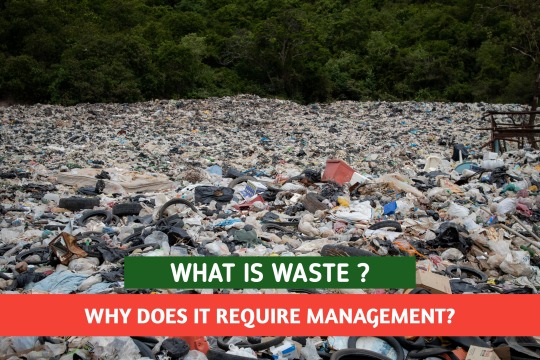
Waste is any material that is not needed by the owner, producer, or processor. Humans, animals, other organisms, and all processes of production and consumption produce waste. It has always been a part of the earth’s ecosystem, but its nature and scale were such that the ecosystem could use waste in its many cycles. In fact, there is no real waste in nature. The apparent waste from one process becomes input to another.
It is the exponential growth of human activities that has made waste a problem to be managed. We are simply producing much more waste than the amount nature can handle.
It is far better to prevent generation of waste than to produce waste and then try to ‘manage’ it. We cannot simply throw away waste. ‘There is no away in throw away’. What we throw away often comes back to us in a different form. What we dispose of remains in the ecosystem and causes some form of pollution. This pollution can have an impact far away from the point of generation and far removed in time too.
The composition, quantity and disposal of waste determine the environmental problems it creates. To minimize the adverse effects of any waste, it has to be recycled, isolated permanently in storage, allowed to decompose and degrade into a harmless state, or treated to remove any toxicity it may have.
Gaseous waste, which is caused mainly by emissions from vehicles and other sources and caries fine particles of matter, leads to air pollution and smog. When gaseous waste is deposited on land as acid rain, it pollutes the soil and water.
Most disposable wastes are in the form of solids, liquids, or slurries. The main categories of such wastes are the following:
Domestic Waste : Sewage, waste water contaminated by detergents, dirt, or grease, household garbage, and bulky waste including packaging material, appliances furniture, office equipment, and used cars.
Factory waste: Solids and effluents from factories of all types. The worst polluters are slaughterhouse, breweries, tanneries, textile, paper and steel mills, and most chemical industries; power plants discharge heated coolant water causing thermal pollution.
Waste from the oil industry: Oil spills, oil leaks, water used for cleaning tankers, etc.
Construction waste: Materials from buildings that are demolished or renovated and materials discarded after completing a building.
Waste from the extractive industries: Mining, quarrying, and dredging create solid waste and slurries.
Plastic waste: Thousands of different goods made of plastic, thrown away after use, are everywhere on land and sea.
Agricultural waste: Mostly organic waste from plants and animals; irrigation water from farms containing fertilizers and pesticides.
Waste from food processing: Organic solid and liquid waste from discarded food materials.
Biomedical waste: Originates mainly from hospitals and clinics and includes blood, diseased organs, poisonous medicines, etc.
E-waste: A more recent form of waste from discarded electronic equipment
Nuclear waste: Radioactive waste from nuclear plants and the manufacturer of nuclear weapons; remains active and dangerous for thousands of years.
Apart from these regular sources, waste also comes from special events:
Waste from natural disasters: Rubble from earthquakes, slag and ash from volcanoes, wastes left behind by floods, cyclones and typhoons.
Waste from wars and conflicts: Apart from dead bodies and destroyed building, wars leave behind exploded and live shells, landmines, etc. In some cases, deadly war material has effects lasting decades. Agent Orange, a herbicide, used the in Vietnam war, and depleted uranium in the 1991 Gulf War are example.
It is very difficult to assess the effects of all types of waste on the environment. We do not know the total amounts, composition, and dispersal of waste. Nor do we have enough scientific knowledge of the long-term impact of most substances that form part of the waste. What is considered non-hazardous today may be declared dangerous tomorrow. In fact, environmentalists feel that we must follow the precautionary principle and treat every chemical or waste as being potentially harmful unless proven otherwise.
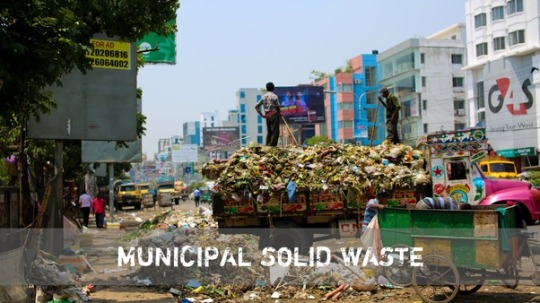
Municipal Solid Waste-
According to the municipal solid waste definition, it is primarily produced in houses. In other words, most municipal solid waste comes from household consumption. However, municipal solid waste includes also some commercial and industrial waste.
Municipal Solid Waste Examples-
The largest component of municipal solid waste is everyday items, such as packaging, Grass clippings, Bottles, Furniture, Clothing, Food scraps, Newspapers, Appliances, Paint, Batteries.
These come from our homes, businesses, schools, and hospitals.
How is Municipal Solid Waste Disposed?
There are helpful disposing methods for half of the annual worldwide municipal solid waste like:
Composting
Recycling programs
Municipal solid waste landfill with advanced technology
Unfortunately, the remaining 50% of worldwide waste products lots of damages due to inappropriate management. This municipal waste is dumped in rivers, on land, and on seas. In the worst case, it is openly burned!
Municipal Solid Waste Pollution
One of the significant sources of environmental problems is incorrect collecting and disposing of municipal solid waste in urban areas. The waste streams originating from industrial commercial solid waste sources are different from the hazardous substances in household waste.
For example, unfortunately, municipal solid waste may be mixed with regulated medical waste. This global issue can cause real problems for many industries, such as factories, farms, hospitals.
Besides, improper disposal of municipal solid waste can cause unsanitary conditions. In turn, these conditions lay waste to human health and the environment, like the Great Pacific Garbage Patch.
Consequently, living things’ lives are in danger due to many factors, from water pollution to large carbon emissions. So, proper solid waste collection, management, and disposal are essential for public health, safety, and environmental quality.
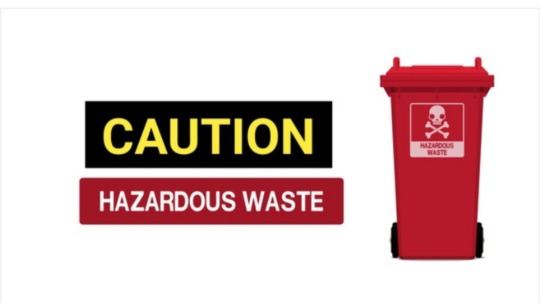
Hazardous Wastes.
hazardous waste means any waste, which by reason of characteristics, such as physical, chemical, biological, reactive, toxic, flammable, explosive or corrosive, causes danger to health, or environment. It comprises the waste generated during the manufacturing processes of the commercial products such as industries involves in petroleum refining, production of pharmaceuticals, petroleum, paint, aluminium, electronic products etc.
For the first time, Rules have been made to distinguish between hazardous waste and other wastes. Other wastes include- waste tyres, paper waste, metal scrap, used electronic items, etc. and are recognised as a resource for recycling and reuse. These resources supplement the industrial processes and reduce the load on the virgin resource of the country.
Problems associated with unscientific disposal of hazardous and other waste
Burning or incineration causes emission of toxic fumes comprising of Dioxins and Furans, Mercury, heavy metals, causing air pollution and associated health-related problems.
Disposal in water bodies, or in municipal dumps leads to toxic releases due to leaching in land and water entailing into degradation of soil and water quality.
The workers employed in such unscientific practices suffer from neurological disorders, skin diseases, genetic defects, cancer etc. Hence, there is a need for systematic management of hazardous and other waste in an environmentally sound manner.
Scientific disposal of hazardous waste through collection, storage, packaging, transportation and treatment, in an environmentally sound manner minimises the adverse impact on human health and on the environment.
The hazardous waste can be disposed at captive treatment facility installed by the individual waste generators or at common hazardous waste treatment, storage and disposal facilities.
Hazardous waste such as lead acid battery scraps, used oil, spent catalysts etc. and other waste such as waste tyres, paper waste, metal scrap etc. are used as raw material by the industries involved in recycling such waste and as supplementary resources for material and energy recovery. Accordingly, it is always preferable to utilise such waste through recycling, or for resource recovery to avoid disposal through landfill or incineration.
What is a Sanitary Landfill?
Sanitary landfills are sites where waste is isolated from the environment until it is safe. Waste is deposited in thin layers (upto 1 m thick) and immediately compacted by heavy machinery. Several such layers are placed and compacted on top of each other to form a refuse cell (up to 3 m thick). At the end of each day the refuse cell is covered with a layer of compacted soil to prevent odours and windblown debris.
There are several requirements for a proper sanitary landfill:
It should be located above the water table.
The area should not be geologically active.
It should not be very near residential communities.
The land must be inexpensive to make the cost of operating the landfill worthwhile.
It must be accessible to roads so that garbage can is delivered easily.
Trained staff should be based at the landfill to supervise site preparation and construction, the depositing of waste and the regular operation and maintenance.
As the matter inside the sanitary landfill breaks down, it generates gases including methane. Some landfills simply vent these gases, while others collect and use them as fuel. Often, sanitary landfills are reclaimed once they are full. The area on top is used to make sports fields, parks, office parks, and so forth.
How is Liquid Waste managed?
Sewage and industrial effluents are in most cases released directly into water bodies - rivers, lakes, or the ocean. Very often they are not treated before release.
The 1972 London Convention prohibits the ocean dumping of hazardous waste. The ocean, however, is still not safe, since all the countries do not observe the Convention. Further, thousands of tonnes of toxic substances (including nuclear waste), dumped into the ocean before the convention came into force, are still present in the ocean and silently polluting the marine environment.
With increasing amounts being generated, management of waste is becoming difficult and expensive. The industrialixed countries have found an easier and less expensive method: export the waste to other countries!
Why are hazardous and Toxic Wastes Exported?
Many of the industrialized countries have a waste management problem. Since their economies are based on constant growth, development, and consumption, wastes are mounting up and they are running out of suitable space for landfills or dump yards. At the same time, these countries have strict environmental regulations that make waste management expensive.
The most attractive option for the industrialized countries is to export the waste to developing countries, where disposal is cheap and environmental regulations are lax. The latter needs the money and the former wants to get rid of the waste. Developing countries do have more space for disposal, but their tropical ecosystems are more vulnerable to the damaging effects of the waste. There are many cases of environmental damage caused in the developing countries due to improper management of imported toxic waste.
At any time, there are a number of ships carrying toxic prowling on the high. Seas, ready to dump the waste on an unsuspecting poor country. Alternately, they just dump the cargo somewhere in the middle of the vast ocean .
Waste management has become an international industry and even some industrialized countries like the UK import waste and make money on it. 90% of the hazardous waste generated in the US is exported to Canada.
The 1989 Basel Convention aims to minimize the creation of hazardous wastes, reduce transboundary movements of such wastes, and prohibit their shipment to countries lacking the capacity to dispose of them in an environmentally sound manner.
0 notes
Text

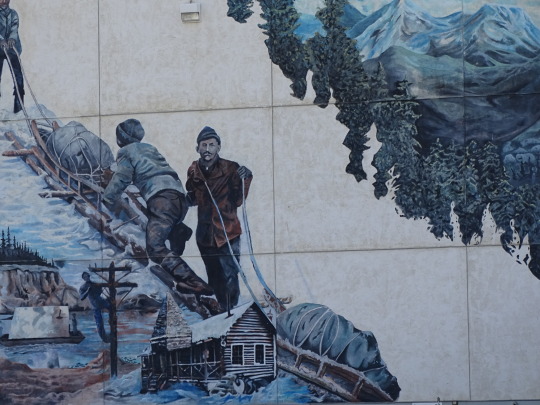

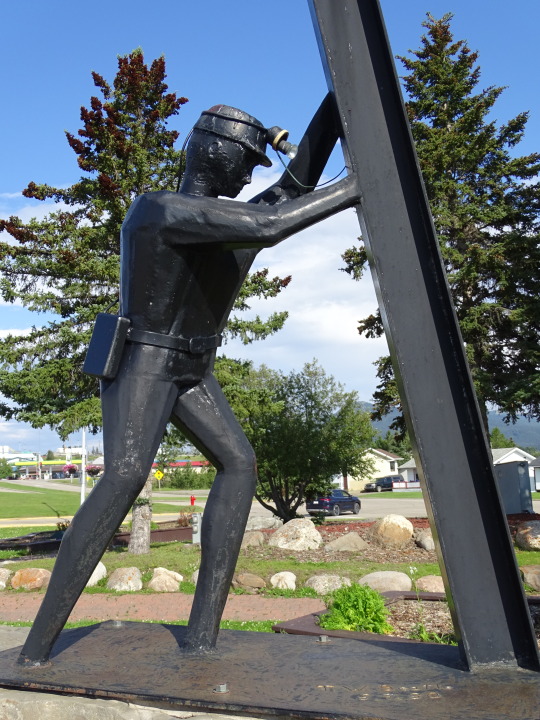

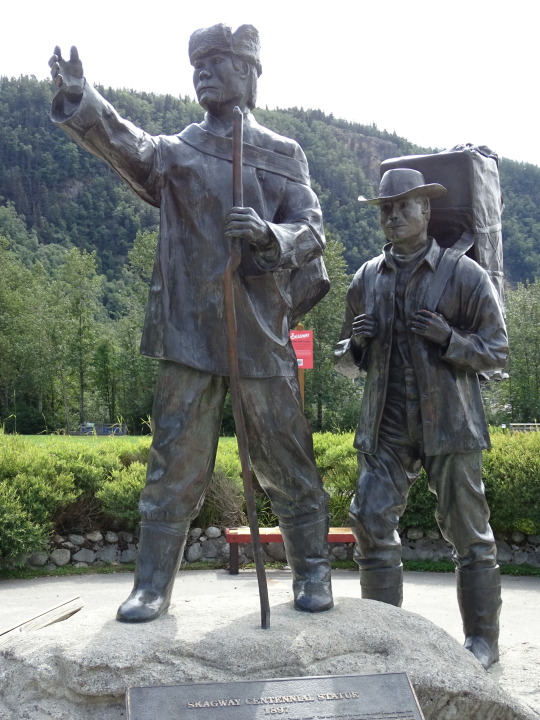

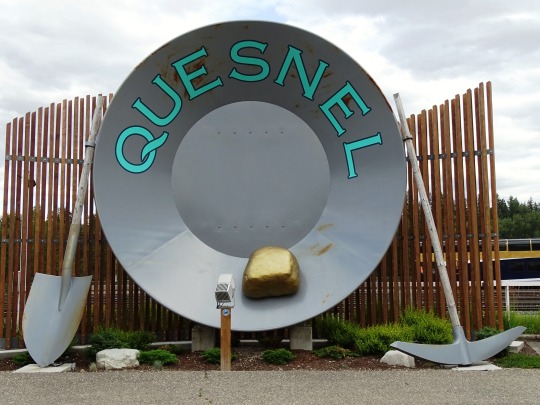

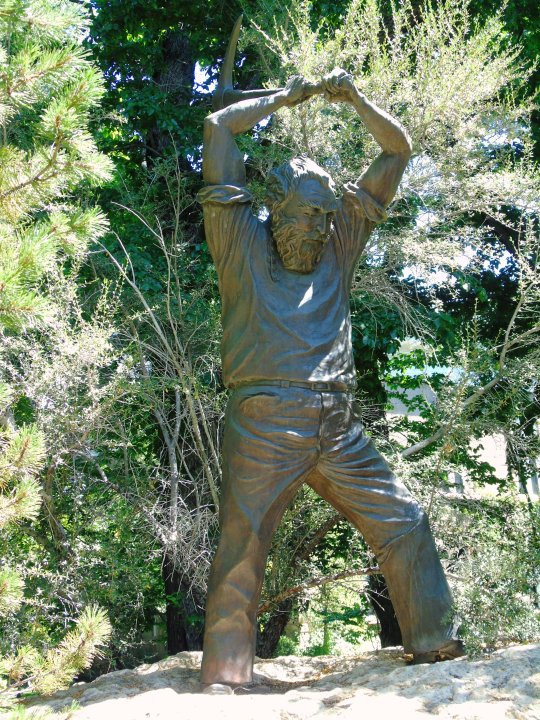
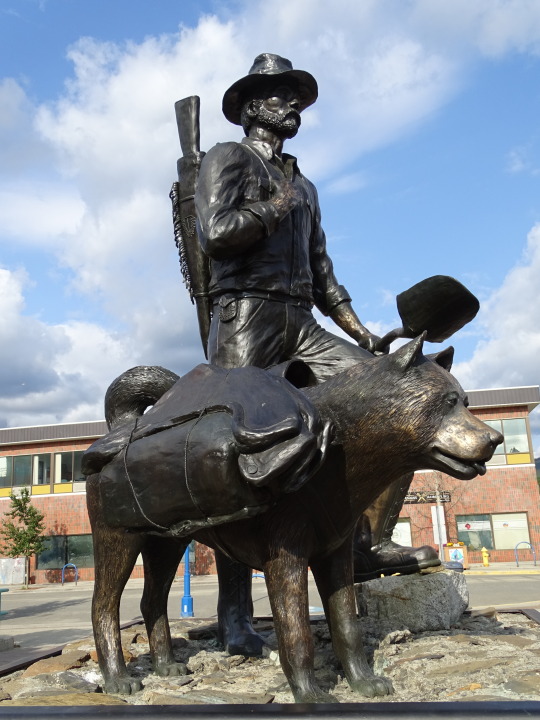
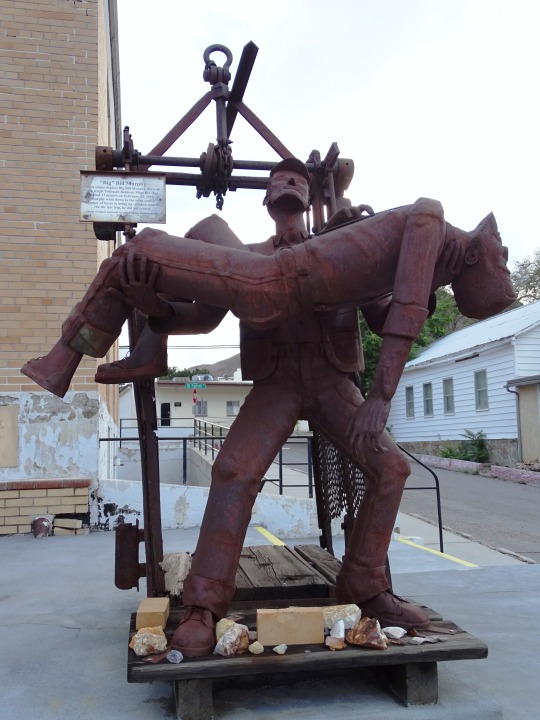




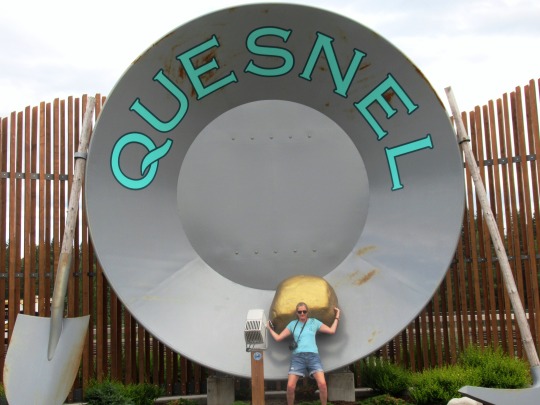
Talk Like a Grizzled Prospector Day
Talk Like a Grizzled Prospector Day commemorates the start of the California Gold Rush, which began on January 24, 1848, when James Marshall discovered gold while building a saw mill for John Sutter, near what is now Coloma, California. The day has its roots in International Talk Like a Pirate Day, and was inspired by Prospectors Day, which was once held at Knott's Berry Farm each year on January 24. It also was inspired by an episode of the Simpsons with the following exchange:
Bart: That ain't been popular since aught-six, dagnabbit. Homer: Bart, what did I tell you? Bart: No talking like a grizzled 1890's prospector, consarn it.
Common examples of characters talking like grizzled prospectors in popular culture include Dallas McKennon narrating Disneyland's Mine Train Thru Nature's Wonderland and Big Thunder Mountain, Gabby Hayes—both drunk and sober—in many Western films, Gabby Johnson in Blazing Saddles, Will Ferrell as Gus Chiggins on Saturday Night Live, and Walter Huston in The Treasure of Sierra Madre.
Prospectors first came to the Sacramento Valley after Marshall found flakes of gold in the American River near Sutter's Mill, at the base of the Sierra Nevada Mountains. At the time there were less than 1,000 non-native inhabitants in California. Newspapers began reporting the discovery of gold, and by August, 4,000 miners had descended on the area. The first people that came from outside of the territory came by boat, and arrived from Oregon, the Sandwich Islands—soon to be called the Hawaiian Islands, Mexico, Peru, China, and Chili.
In December 1848, President James K. Polk announced a report by Colonel Richard Mason which spoke of the abundance of gold in California; this prompted more prospectors to travel to the territory. Throughout 1849, thousands arrived, either traveling by sea or over land, and became known as '49ers. Mining towns popped up in the area, and with them came shops, saloons, and brothels. Many mining towns became lawless, and San Francisco became an important city in the territory. By the end of 1849, the non-native population had swelled to 100,000. The Gold Rush helped California gain statehood in 1850, and gold discovery peaked in the state in 1852. In all, more than 750,000 pounds of gold were extracted during the Gold Rush.
The implication of a grizzled prospector is of one who has stayed so long searching for gold that their hair has turned gray. Some prospectors refused to quit the profession and continued to live in the Western territories. So, when Bart Simpson mentioned a grizzled prospector from the 1890s, he was referring to a prospector that had stayed more than forty years after the Gold Rush happened, still trying to find gold, or other commodities such as silver, oil, radium, and uranium. Besides a gray beard, the stereotypical grizzled prospector had faded clothes, missing teeth, a pickaxe, and a mule. They had bouts of gold fever, and were suspicious of whoever came close to their claim.
How to Observe Talk Like a Grizzled Prospector Day
Celebrate the day talking like a grizzled prospector. Here are a few words prospectors commonly used, that you could use today:
Dadburn: to curse; e.g.: "Dadburned boll weevil done 'et my crop!"
Hornswoggle: to embarrass, disconcert, or confuse; e.g.: "I'll be hornswaggled!"
Consarn: the entirety of something, also a curse word.
Dumbfungled: all used up; e.g.: "This claim is dumbfungled! There's no gold left!"
Bonanza: a mine with lots of gold.
Borrasca: a mine with no gold.
Baby buggy: wheel barrow.
Muck: to dig with a shovel.
Powder monkey: a miner who used dynamite to make holes.
Johnny Newcome: a miner new to camp.
Blackjack and saw bosom: coffee and bacon.
Paydirt: land rich in gold.
Panned out: if they had found gold while sifting through dirt with a mining pan, then things had "panned out."
Flash in the pan: something shiny in pan that turned out to be nothing, or just a small piece of gold.
Stake a claim: claim a piece of land as your own as a place to search for gold, must stake the land with wooden stakes when you arrive.
The day could also be spent watching films such as The Treasure of Sierra Madre, or old Western films starring Gabby Hayes. A visit to the Sutter's Mill replica and the Gold Discovery and Visitor Center in Marshall Gold Discovery State Park could also be planned. The days' Facebook page could also be explored.
Source
#Miners Memorial by T.W. Seatle#Grande Cache#Prospector and his dog by Chuck Buchanan#Whitehorse#Yukon#Alberta#summer 2023#Canada#World’s Largest Gold Pan by Linden Welding#Quesnel#British Columbia#Skagway Centennial Statue by Chuck Buchanan#Alaska#Stampeder Statue by Peter Lucchetti#Gold Rush Mural by Lance Burton#Talk Like a Grizzled Prospector Day#travel#USA#NationalTalkLikeAGrizzledProspectorDay#24 January#vacation#original photography#tourist attraction#landmark#Sweden#Falun Mine#Gruvabetaren by Helge Zandén#Nevada#Carson City#Tribute to Nevada Miners by Greg Melton
1 note
·
View note
Photo

Movies I watched this Week #109 (Year 3/Week 5):
(I had a hard time concentrating on movies this week: I got bored easily and started a dozen films I had to click off after a few minutes. Anyway, below are the few I managed to finish :)
🍿
2 by Polish poet Lech Majewski:
🍿 A wonderful new discovery, the visually-stunning The Mill and the Cross. It’s a literal recreation of Bruegel’s 1564 painting ‘The Procession to Calvary’, done in Newport Beach’s ‘Pageant of the Masters’ style. (Photo Above). With a minimal narrative and nearly no dialog, it transports a masterpiece from one medium into another. (Discovered Here). 10/10.
🍿 “... Madame, do you know what mood spelled backward is?...”
His latest drama, Valley of the Gods, however, was disappointing: A symbolic story mixing an indigent Navaho tribe, the richest man in the world who wants to buy the Indian land to mine for Uranium and a writer whose wife flew away with her hang gliding instructor - it was a senseless artsy mess. There were some overtures to Kubrick by using David Bowman as the butler, and Purcell’s Music For The Funeral Of Queen Mary for the finale. But all the mysticism didn’t work for me, as beautiful as the canvass it was painted on it was.
I was planning to continue with his 2014 ‘Field of Dogs’, but will now do so after a break.
🍿
When I lived in Paris in the mid-70′s, I hang around the fringes of certain Dušan Makavejev fan-groups, and at one point I was invited to join their free-spirited commune for some everything-goes sexual explorations. But after seeing his Sweet Movie I promptly drifted away.
Watching it again 50 years later, it didn’t seem so bad.... Until the third act... when this surrealistic Jodorowski-lite agitprop fable turned into a full-on shit-smearing, vomit-orgy, Primal-Therapy violent explosion. Crazed anti-capitalist, (and anti-Marxist), polymorphic-perverse, subversive anarchy. mixed with grainy footage of WW2 massacres and seduction of children it’s depraved, revolting and unpleasant shock cinema at its peak. 2/10.
🍿
“... You’re innocent when you dream”...
Another surprising new discovery, an art-house film so obscure that it doesn’t even have a Wikipedia page: Miss Osaka, by Daniel Dencik, a Danish director (who lives in Samoa). It’s a slow and atmospheric story about Ines, an introverted young woman on vacation in Norway who meets there a beautiful free-spirited woman from Japan. When Mimiko drowns while swimming out under the Northern lights, Ines steals her identity and escapes to Osaka, where she starts working as a hostess at her old nightclub. An elusive parable about identity, not as deep as Antonioni’s ‘The Passenger’, but nearly just as evocative. The trailer. 8/10.
Bonus points for Tom Waits quotes (which was also used in ‘Smoke’)!
🍿
I picked the Bollywood romantic Dil Se.. completely in random, just to spend the evening with a mindless, silly musical, and indeed the first number they burst out singing (on rooftop of a moving train) was the famous Chaiyya Chaiyya with Indian superstar SRK, so that was a good sign!
Unfortunately, the rest was a mess: Only 4 or 5 dance numbers (including this sexy Satrangi Re) were to be enjoyed during the stretched out 3-hours. The story was about a man who obsessively stalks a woman he sees at a train station, before realizing that she is a suicide bomber belonging to some revolutionary “terrorists”. 2/10.
🍿
Harry Caul X 2:
🍿 What does it say about me, that after thousands of movies that I’ve seen, if I had to choose only one as my most favorite, it will without a doubt be Coppola’s paranoiac The conversation? And I’m not even Catholic.
RIP, Cindy Williams.
🍿 So I used this chance to see, once again, another of my favorite Deep State surveillance-paranoia thrillers, Enemy of the state. Predating Snowden’s NSA disclosures, it plays as fresh today as it did 25 years ago. With Skyler White as Jon Voight (His best role ever?) and Jack Black, who lusts after the middle age Latina nanny with the unshaven legs. 9/10.
🍿
Paprika, my first by Satoshi Kon, and one of my first anime films. A complicated mind-fuck soup about a dream-thief that was hard for me to understand, and even more so to appreciate. It reminded me in parts of ‘Spirited Away’, but Miyazaki’s miraculously-mysterious story was geared toward 10 year old girls, and this one had appeal to 20 year old boys.
Discovered it here, which may have been better.
🍿
...“Isadora Duncan - worked at Telefunken”...
Let it be, Michael Lindsay-Hogg’s 1970 Beatles documentary, recording their last album, and including the original footage from the Apple building rooftop concert on Savile Row. So many great moments in it, the full rendition of ‘The long and winding road’, goofing off with ‘Bésame Mucho’, John and Yoko waltzing alone... Peter Jackson cleaned up the grainy images and incorporated them into his 8 hours ‘Get Back’ doc.
"I'd like to say thank you on behalf of the group and ourselves, and I hope we passed the audition!"
🍿
Restless, my 10th by Gus Van Sant. A slight, sweet romance about a young guy, Dennis Hopper’s son, who - like Harold - likes to attend strangers’ funerals. In one of them he meets and falls in love with short-haired teenage Mia Wasikowska, who has only 3 months to live, before she will die of a brain tumor. 5/10.
Incidentally, the opening titles were playing ‘On our way home’ from ‘Let it be’!
🍿
Make Hummus Not War, a slight Australian documentary frames its topic as the conflicting views on which people can claim the ownership, even the genesis, for everybody’s favorite dish. This gives the journalist/filmmaker an excuse to travel to Lebanon, Israel and Palestine, and eat in dozens of hummus restaurants. I mainly watched it, because Mmmmm, Hummus...
🍿
Really love, an all-black romantic comedy written by a first time writer and directed by a first time female director. Maybe they were inspired by ‘In the mood for love’, but it surely didn’t look that way. Too shallow and thin with no character development or flair. 2/10.
🍿
Everybody has their ‘Best of’ list for Black Mirror. Of the 23 episodes, there are 7 that I watched many times, 9 that I watched once and will probably never re-visit, and others that are in between. My most favorites (in no special order) are ‘The National Anthem’, AKA ‘fuck-a-pig’, ‘Hated in the nation’ (a masterpiece), ‘USS Callister’ with Nanette Cole, ‘Striking Vipers’ and ‘Smithereens’. The ones that I disliked were mostly of the ‘Mean Violent’ kind, ‘White Bear’, ‘White Christmas’, ‘Playtest’, ‘Men against fire’. So I decided to re-watch some of those in between:
🍿 Crocodile is dark and horrifying, and the Icelandic landscapes are a distinct character in the story.
🍿 Hang the DJ is about the difficulties of dating, so it didn’t speak to me specifically, but it was actually a sweet romance with an uplifting ending, which is unusual for Black Mirror.
🍿 Be right back, another semi-sweet romance, mixed with the exploration of grief. A young loving couple, a fatal accident, an unexpected pregnancy, and bringing the dead back to life, what not to love.
🍿 I ran the main 5 mutations of Bandersnatch together with Adora, when it premiered and when she was 9. She liked it, but I’m not sure why, as it wasn’t our usual fair at all. Seeing it now (in the static 90 min. pirated version) has only 3 positives: The unique ability to interact and “create one’s own adventure”, the Laurie Anderson’s ‘Oh Superman’ alternative and the oh-so-clever Netflix meta-joke. The narrative was miserable and not interesting in the least. 3/10.
🍿 The Entire History of You, a completely dull domestic drama of manners about jealousy. It was so forgettable, that I couldn’t recall seeing a single detail from it, even though I saw it before. Ironic, since it was about people who can remember every emotion they ever had.
🍿 In 2018 Polish Netflix issued ‘Little Black Mirror’, 4 short YouTube webisodes, made by young local filmmakers. The superficial stories about influencers, new relationship apps and an expecting young couple who learn that their son is going to become a murderous psychopath, showed that the Black Mirror ‘feels’ are easy to parody and copy, with sleek, streamlined technology, modern interiors and unsettling scenarios. But they were inferior to and much more predictable than the originals. At least they were short.
🍿 Conclusion: ‘Black Mirror’ is considered a ‘great’ series, but many of its episodes are mediocre. The ones that I like, rule. And the other ones suck. Still, I can’t wait for series 6.
🍿
Donks, a new short from Felix Colgrave about ocean plastic, avatars and adaptive bottom feeders. Cyriak-lite.
🍿
(My complete movie list is here)
1 note
·
View note
Text
A Uranium ghost town in the making


This story was originally published by ProPublica.
The “death map” tells the story of decades of sickness in the small northwest New Mexico communities of Murray Acres and Broadview Acres. Turquoise arrows point to homes where residents had thyroid disease, dark blue arrows mark cases of breast cancer, and yellow arrows mean cancer claimed a life.
Neighbors built the map a decade ago after watching relatives and friends fall ill and die. Dominating the top right corner of the map, less than half a mile from the cluster of colorful arrows, sits what residents believe is the cause of their sickness: 22.2 million tons of uranium waste left over from milling ore to supply power plants and nuclear bombs.

Neighbors created the “death map” to highlight cancer cases in New Mexico’s Murray Acres and Broadview Acres communities.
Image courtesy of Candace Head-Dylla. Graphic composition by Mauricio Rodriguez Pons/ProPublica.
“We were sacrificed a long time ago,” said Candace Head-Dylla, who created the death map with her mother after Head-Dylla had her thyroid removed and her mother developed breast cancer. Research has linked both types of illnesses to uranium exposure.
Beginning in 1958, a uranium mill owned by Homestake Mining Company of California processed and refined ore mined nearby. The waste it left behind leaked uranium and selenium into groundwater and released the cancer-causing gas radon into the air. State and federal regulators knew the mill was polluting groundwater almost immediately after it started operating, but years passed before they informed residents and demanded fixes.
The contamination continued to spread even after the mill closed in 1990.
The failures at Homestake are emblematic of the toxic legacy of the American uranium industry, one that has been well-documented from its boom during the Cold War until falling uranium prices and concerns over the dangers of nuclear power decimated the industry in the 1980s. Uranium mining and milling left a trail of contamination and suffering, from miners who died of lung cancer while the federal government kept the risks secret to the largest radioactive spill in the country’s history.
But for four decades, the management of more than 250 million tons of radioactive uranium mill waste has been largely overlooked, continuing to pose a public health threat.
ProPublica found that regulators have failed to hold companies to account when they missed cleanup targets and accepted incorrect forecasts that pollution wouldn’t spread. The federal government will eventually assume responsibility for the more than 50 defunct mills that generated this waste.
At Homestake, which was among the largest mills, the company is bulldozing a community in order to walk away. Interviews with dozens of residents, along with radon testing and thousands of pages of company and government records, reveal a community sacrificed to build the nation’s nuclear arsenal and atomic energy industry.
Time and again, Homestake and government agencies promised to clean up the area. Time and again, they missed their deadlines while further spreading pollution in the communities. In the 1980s, Homestake promised residents groundwater would be cleaned within a decade, locals told the Environmental Protection Agency and ProPublica. After missing that target, the company told regulators it would complete the job around 2006, then by 2013.
In 2014, an EPA report confirmed the site posed an unacceptable cancer risk and identified radon as the greatest threat to residents’ health. Still, the cleanup target date continued shifting, to 2017, then 2022.
Rather than finish the cleanup, Homestake’s current owner, the Toronto-based mining giant Barrick Gold, is now preparing to ask the Nuclear Regulatory Commission, the independent federal agency that oversees the cleanup of uranium mills, for permission to demolish its groundwater treatment systems and hand the site and remaining waste over to the U.S. Department of Energy to monitor and maintain forever.
Before it can transfer the site to the Department of Energy, Homestake must prove that the contamination, which exceeds federal safety levels, won’t pose a risk to nearby residents or taint the drinking water of communities downstream.
Part of Homestake’s strategy: buy out nearby residents and demolish their homes. Local real estate agents and residents say the company’s offers do not account for the region’s skyrocketing housing costs, pushing some who accept them back into debt in order to buy a new home. Those who do sell are required to sign agreements to refrain from disparaging Homestake and absolve the company of liability, even though illnesses caused by exposure to radioactive waste can take decades to manifest.
Property records reveal the company had, by the end of 2021, purchased 574 parcels covering 14,425 acres around the mill site. This April, Homestake staff indicated they had 123 properties left to buy. One resident said the area was quickly becoming a “ghost town.”
Even after the community is gone, more than 15,000 people who live nearby, many of them Indigenous, will continue to rely on water threatened by Homestake’s pollution.
The company said it has produced models showing that its waste won’t imperil the region’s water if it walks away. The NRC says it will only grant a groundwater cleanup exemption if that’s the case.
But while Homestake and other mining companies have polluted the region, it’s been the NRC and various other agencies that stood by as it happened. ProPublica found the NRC has issued exemptions from groundwater cleanup standards to uranium mills around the country, only to see pollution continue to spread. This has occurred as climate change hammers the West, making water ever scarcer.
“Groundwater moves. Groundwater doesn’t care about regulations,” said Earle Dixon, a hydrogeologist who reviewed the government’s oversight of uranium cleanup and pollution around Homestake for the New Mexico Environment Department and the EPA. Dixon and other researchers predict contamination at Homestake will likely spread if cleanup ends.
The company has denied that its waste caused residents’ illnesses, and judges ruled in Homestake’s favor in a case residents filed in 2004 alleging the site caused cancer. Doctors testified that the pollution was a substantial factor contributing to residents’ cancers, but tying particular cases to a single source requires communitywide blood, urine and other testing, which hadn’t been done.
“We are proud of our work done in remediating the Homestake Uranium Mill site,” Patrick Malone, Homestake’s president, said in a letter responding to questions from ProPublica. He said Homestake was entering the final stages of cleanup because “the site is at a point where it is not technically feasible to provide additional, sustainable improvements to water quality.”
David McIntyre, an NRC spokesperson, attributed cleanup delays to the area’s complex groundwater system. “We understand and share the concern that remediation is taking so long,” McIntyre said, adding that the agency’s priority is to protect public and environmental health rather than meet particular deadlines.
The EPA has oversight of the former mill’s cleanup under its Superfund program that aims to clean the country’s most toxic land. The EPA regional office did not respond to questions.

Images courtesy of the Cibola County History Museum. Graphic composition by Mauricio Rodríguez Pons/ProPublica.
Larry Carver has implored an endless stream of regulators to take action since his family moved to Murray Acres in 1964, and neighbors defer to him to tell the community’s story. The 83-year-old leaned against his Chevrolet pickup on a blustery spring morning, peering from beneath a baseball cap at Homestake’s 10-story pile of waste. He lamented that the community would be sacrificed so uranium waste could remain.
For Carver, arrows on a map don’t tell the full story of uranium’s impact. His wife’s aunt and uncle owned the home closest to the waste piles. Her aunt died of liver cancer when she was 66 years old, and her son, who grew up playing in unfenced waste ponds, died of colon cancer when he was 55 years old. Now, Carver and his wife both have spots on their lungs, with hers recently requiring radiation treatment.
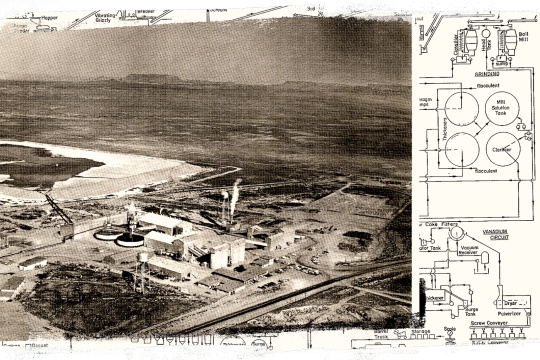
Homestake opened in 1958, drawing workers from across the country to the towns of Grants and Milan. Image courtesy of the New Mexico Bureau of Geology and Mineral Resources. Graphic composition by Mauricio Rodríguez/ProPublica.
“All the houses are going to be gone. The wells are being plugged. The septic systems are being torn up,” Carver said. “There will be nothing.”
Saturday, April 26, 1958, was a momentous day in the towns of Grants and Milan, New Mexico.
Full-page newspaper ads announced the opening of Homestake’s new uranium mill. A military flyover kicked off the festivities, a high school band played, and the New Mexico secretary of state unveiled a plaque commemorating the occasion. An estimated 6,000 people, nearly three times Grants’ population at the beginning of that decade, toured the mill, the local newspaper, the Grants Beacon, reported. Grants would be the Carrot Capital of America no more. It was running headlong into the Atomic Age.
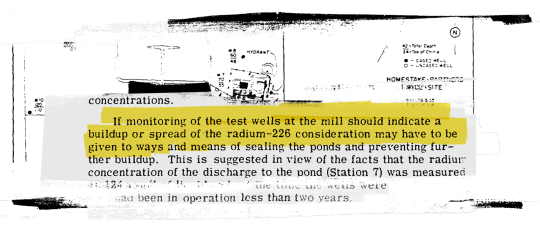
But the celebration was short-lived: Less than a year and a half after operations began, state and federal regulators, with the company’s help, began investigating whether contaminants were leaking from Homestake’s waste.
ProPublica found that, as with most uranium mills in the U.S., Homestake built no liner between the earth and the sandy waste left over from milling, known as tailings. This happened even though an engineer with the New Mexico Department of Health warned the company only weeks after the mill opened that it needed to at least compact the soil underneath its waste to prevent leaks. Without a liner, pollution seeped into aquifers that supplied drinking water. In 1961, the same engineer wrote that groundwater samples showed radium 226, a radioactive and cancer-causing element, at levels as much as 31 times higher than naturally occur in the area, indicating “definite pollution of the shallow ground water table by the uranium mill tailings’ ponds.”
A federal report a year later identified even higher levels of radium 226 in groundwater.
Residents drank that water, fed it to livestock and applied it to crops. They weren’t told of the issue or supplied with bottled water until the mid-1970s, neighbors said. “A long time to keep the secret,” Carver said.
The EPA in the 1970s found elevated levels of selenium, which can damage the nervous system at high doses. Homestake disputes what levels of contaminants are attributable to the mill versus other sources, a question regulators are currently studying. The company confirmed in 1976 that its waste had created a plume of contamination in the groundwater but waited another decade to connect residents to an uncontaminated water system, only doing so after pressure from the EPA.
Seventeen years after pollution was first detected, Homestake began a series of ultimately unsuccessful attempts to clean the groundwater. The company pumped contaminated water out of aquifers and evaporated it aboveground, treated it in filtration systems and dumped hundreds of millions of gallons of clean water on the waste to flush uranium out of the pile, collecting the newly contaminated water for disposal.
Homestake was still left with more polluted water than it could process, so the company irrigated crops, applying more than 3.1 billion gallons to farmland in the subdivisions. As a result, the topsoil contained elevated levels of uranium and selenium. The state and the NRC halted the practice, which the NRC said the company had done without its approval.
Much of the now-fallow farmland has turned to dust that’s an incessant headache for residents. Windstorms whip it up, piling it on roadways and pushing it through the slightest cracks in homes. Regulators have issued dozens of violation notices to the company, including for failing to fence off contaminated land and for exposing workers to high uranium levels without alerting them.
At the state level, New Mexico regulators waited until 2009, 49 years after first finding water pollution, to issue a formal warning that groundwater included substances that cause cancer and birth defects. They waited another nine years before barring people from drilling new or replacement wells in aquifers near the cleanup effort, but the order did not require existing wells to be plugged. A spokesperson for the New Mexico Office of the State Engineer said authorities had issued a “relatively small” number of domestic or livestock well permits in the contaminated area. That number, the spokesperson said, is 122.
Uranium exposure is pervasive in this part of the world.
Miners who worked before 1971, when the government was the sole purchaser of uranium, are eligible for compensation under the Radiation Exposure Compensation Act. In June, President Joe Biden signed a bill postponing its expiration for two years. But miners who worked in the industry after other uranium buyers entered the market, as well as residents of communities that were impacted by uranium extraction and processing, like those next to Homestake, still receive no benefits. Spearheaded by the New Mexican delegation, bills pending before Congress would expand the legislation to include more miners and appropriate funds to study the health impacts of living near these sites.
Linda Evers is waiting on those reforms. She worked in the area’s mines and mills, including Homestake, after the 1971 cutoff. She stayed on the job through two pregnancies, removing trash from the ore until hours before she gave birth to her son. Both her children have birth defects, and she now lives with kidney failure, cysts on her organs and a degenerative bone disease.
“You worked in a never-ending dirt storm,” Evers remembered. “You were supplied a paper mask that was worthless in about 20 minutes.”
She also dealt with contamination at home. For more than 15 years, Evers lived across the street from Homestake. Her well water was so foul it stunted the plants in her garden, she said. Evers eventually accepted the company’s buyout offer and moved to a new home farther from the waste. A half-built greenhouse sits in her former backyard, her once-lively home stripped of its porch and part of the roof.
Down the road, John Boomer doesn’t know where he’ll go if he sells to Homestake. An artist who paints with a Southwestern palette of sand and soil, he lives in an art studio and home he shares with his partner, Maggie Billiman, a member of the Navajo Nation and fellow artist.
The consequences of uranium production are constantly on the couple’s minds. More than 500 abandoned uranium mines pockmark the Navajo Nation, and Billiman’s father, a Navajo Code Talker in World War II, died of stomach cancer, an illness associated with downwind exposure to nuclear tests. Boomer has written the story of uranium into lyrics, singing about the harm caused by the waste that was left behind.
Those corporate little creeps
Will cause many a widow to cry and weep
While I’m just left on the ground to seep
Homestake is working on requests to both the NRC and the EPA for groundwater cleanup waivers, arguing it’s done all it can to clean up the area.
The company excavated soil from more than 3,500 acres where wind had carried contaminants off-site. Homestake also collected about 1.3 million pounds of uranium and 75,000 pounds of selenium by treating or evaporating more than 10 billion gallons of groundwater, according to company data.
Other uranium mines and mills polluted the area’s main drinking water aquifer upstream of Homestake. Residents worry what will happen to contamination from those sites and from Homestake when the company halts its water treatment.
Homestake says it has built a hydrological model that shows the former mill’s contamination will stay close to the site. (The model won’t be released until the company files its formal application for cleanup exemptions, likely in August.)
But researchers who have studied the hydrology around Homestake said the contamination will head downstream. “Would it keep on moving? Yes, that’s nature,” said Dixon, the hydrogeologist. The real question, he said, one that modeling can’t answer, is how quickly the pollution will migrate.
ProPublica identified sites across the West where regulators approved waivers based on modeling, only to later discover the predictions were flawed.
At a site in Wyoming called Bear Creek, the NRC found concentrations of uranium in groundwater more than 10 times higher than a model had predicted. At a site along the banks of the Colorado River, in Rifle, Colorado, the NRC approved a cleanup plan based on groundwater modeling that predicted uranium would fall to safe levels within 10 years. Monitoring showed concentrations remained dangerously high about a decade later, and new modeling predicted uranium levels wouldn’t reach safe levels for more than a century.
There’s also the cleanup of another Wyoming mill named Split Rock, which Homestake has compared its site to as it seeks a cleanup exemption. Regulators granted a waiver in 2006 after the responsible company presented a model showing contamination wouldn’t reach downstream wells for 1,000 years. “The recent data, however, have shown results that are not consistent with the model predictions,” the NRC wrote seven years later. Nitrates, which are sometimes used in the uranium refining process, were measured in a downstream monitoring well at more than four times approved limits.
McIntyre, the NRC spokesperson, said that in those cases, “NRC staff reviewed groundwater monitoring results and verified that the levels were and remain protective of public health and safety,” adding that the agency requires models used in waiver requests be conservative in their predictions.
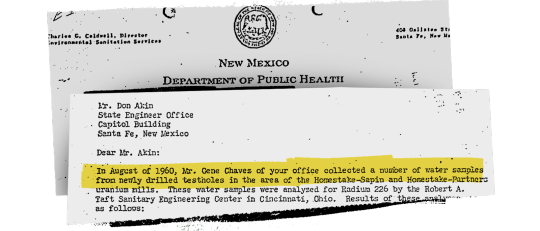
Leaders of communities downstream from Homestake, including the Pueblo of Acoma, fear that wishful thinking could allow pollution from the waste to taint their water. The Acoma reservation, about 20 miles from Homestake’s tailings, has been continuously inhabited since before 1200. Its residents use groundwater for drinking and surface water for irrigating alfalfa and corn, but Donna Martinez, program coordinator for the pueblo’s Environment Department, said the pueblo government can’t afford to do as much air and water monitoring as staff would like.
“There are always going to be concerns with the plumes,” Martinez said.
Most days, Billiman contemplates this “poison” and whether she and Boomer might move away from it as she prays to Mother Earth and Father Sky toward Mount Taylor, one of the four sacred Diné peaks, which rises just east of the subdivisions.
“I tell her, gosh, we did this to you. I’m sorry,” Billiman said. “Then, we just say ‘hózho náhásdlii, hózho náhásdlii’ four times.”
“All will be beautiful again,” Boomer roughly translated.
As they prayed one recent morning, the dawn light tumbled over the mountain, illuminating the nearby Haystack Mountain, where a Diné man named Paddy Martinez discovered economically recoverable uranium in 1950 and ignited the region’s mining boom. The light cascaded over Homestake’s tailings piles, across the valley and onto the five subdivisions.
The smell of pizza wafted through a Village of Milan government building down the road from the mill site, as about 20 locals trickled in to meet with Homestake one April evening. They caught up while JoAnne Martinez, a community liaison for Homestake, beseeched them to tuck into the food she had set out. A map taped to the wall showed the location of groundwater contamination, and a stack of glossy booklets celebrated the company’s reclamation project with the slogan: “Doing it right… …Right to the end.”
Tensions rose when residents spoke about the company’s offers to buy their properties. Homestake, whose parent company Barrick had nearly $12 billion in revenue last year, pays market value based on past sales prices of comparable properties, rather than the cost to replace what residents have, which is ballooning rapidly amid the housing crunch. Over the past five years, prices for residential properties around New Mexico have increased about 59%, while they’ve spent about half as long on the market, according to data from real estate companies Zillow and Redfin, respectively.
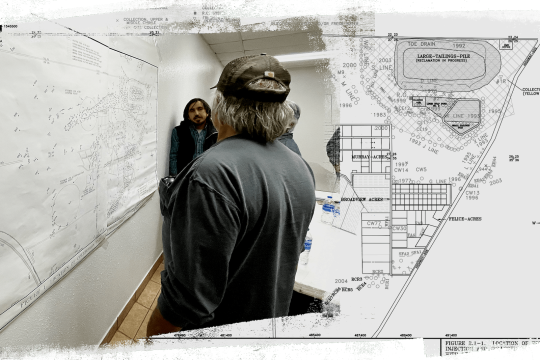
Neighbors are concerned by what they deem to be low offers from Homestake to buy their properties. Mark Olalde/ProPublica.
In the meeting, residents explained what that trend, coupled with Homestake’s offers, has meant for their own housing searches. “It’s like you spit on me,” one resident said of the company’s proposal to buy the property where she has lived for 61 years. Another neighbor told ProPublica she had asked a builder to assess the cost of constructing a nearly identical home and got an estimate $60,000 higher than what Homestake offered. But Homestake didn’t budge.
Neighbors have worried about Homestake’s impact on their property value for decades. They filed a class-action lawsuit against the company in 1983 for alleged property damages, later settling the case for what they deemed to be small payouts. In exchange, those residents agreed to release the company from further liability.
More recently, the company has rejected residents’ requests to move the waste to a lined disposal cell, which could prevent additional groundwater contamination and radon exposure and possibly allow them to stay in their homes. So far, cleanup has cost more than $230 million, including about $103 million that came from taxpayers through the Department of Energy. Homestake estimates it could cost as much as $2 billion more to move the entire pile. Buying out five subdivisions is the cheaper option.
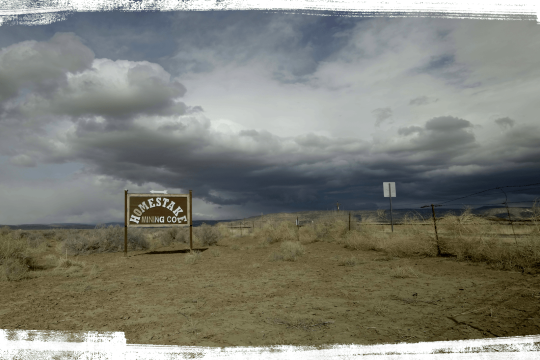
Mauricio Rodríguez Pons/ProPublica.
Homestake argues capping the site and walking away is safer, citing reports that conclude moving the pile would lead to at least one workplace traffic-related death and a high likelihood of workers and residents developing cancer. The reports used calculations from the Department of Energy, which is moving 16 million tons of uranium waste off of a site in Moab, Utah. The department’s report found it posed far less risk to workers than later estimates for Homestake. Department of Energy staff said they could not comment on why there are such different risks for the Homestake and Moab sites.
As more neighbors at the meeting demurred about the company’s offers, Orson Tingey, a land manager for Homestake and Barrick, explained that the company has continued to offer the same rates for properties as it did before the COVID-19 pandemic to remain consistent. “We know that doesn’t necessarily work for everybody,” he said.
Jackie Langford set a radon detector on her kitchen table and shooed away her inquisitive 12-year-old, who was more interested in talking uranium policy than finishing his homework. She recalled when her family moved in a decade ago for her husband’s job. No one mentioned the risks posed by Homestake’s tailings pile, which looms less than a mile away.
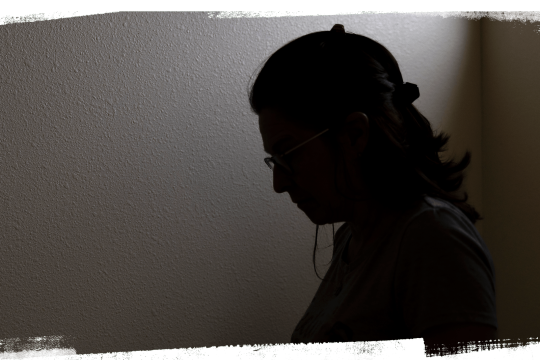
Jackie Langford in her house near the mill. No one alerted her about the radon risks in the area before she moved in. Ed Ou for ProPublica
Now, as a registered nurse tending to former uranium miners, Langford knows too much about the dangers. When it’s inhaled, radon breaks down in the lungs, releasing bursts of radiation that can damage tissue and cause cancer. Her patients have respiratory issues as well as lung cancer. They lose their breath simply lifting themselves out of a chair.
Radon, the radioactive gas formed as uranium decays, poses Homestake’s main cancer threat to residents, according to the EPA’s 2014 study. It is more concentrated in outdoor air near Homestake than in a nearby community with a former uranium mill that has fully covered its waste.
It hasn’t helped that the company has struggled to control radon emanating from its larger waste pile, exceeding federal safety standards each of the last six years, according to company readings reported to the NRC. This year, Homestake requested permission to add a new cover to the pile to reduce radon emissions, which the NRC is now reviewing.
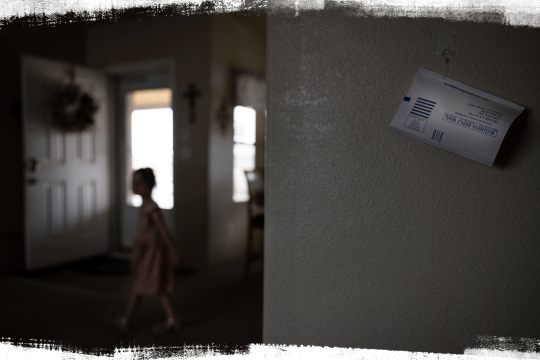
A radon test kit in a resident’s home. Ed Ou for ProPublica.
During the pandemic Langford and her family began thinking more about Homestake’s possible impact on their respiratory health, driving them to buy a radon detector. The gas can seep into buildings through cracks in foundations. Indoor radon exposure is the second-leading cause of lung cancer in the United States, behind smoking.
When Langford measured levels in her home, the radon detector registered 4 picocuries per liter and rose as high as 7 pCi/L, she said — levels high enough that the EPA recommends remediation.
She brought her concerns to Homestake, but “for the longest time, they wouldn’t talk to me,” she said. The company eventually connected her with one of their consultants, who told her not to worry because his own home tested above 4 pCi/L and the results did not concern him. He also told Langford, as well as ProPublica, that he is not a radon expert and suggested she complete a longer-term radon test and contact people better versed on the topic.
In 2010, before Langford moved in, EPA contractors placed radon detectors in homes near Homestake and found unsafe radon levels in a dozen homes.
While independent researchers suggested the uranium waste could be a source of indoor radon, the EPA has not determined that is the case, instead identifying naturally occurring gas seeping from the soil. The agency required Homestake to fund radon mitigation in homes but has not done any more radon testing or mitigation since.
“Best practice would be retesting at least every other year to assure things have not gotten worse,” said Michael Murphy, who is retired from the EPA’s indoor air quality team.
ProPublica spoke with eight households the EPA monitored, and all said they were never retested or advised to retest on their own. An EPA staffer told one resident the agency had no plans to conduct follow-up studies.
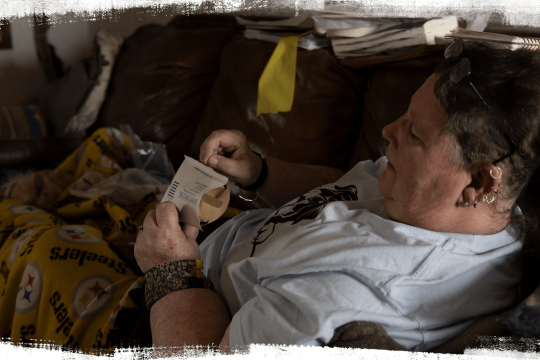

John Boomer and Elaine Borchert measured radon levels in their homes. Ed Ou for ProPublica.
Because the EPA did not return to test, ProPublica did, placing certified indoor radon kits in nine area households. Three returned readings that exceeded the EPA’s threshold for mitigation, while a fourth registered above the World Health Organization’s lower suggested mitigation level. Langford’s tests averaged 6.95 pCi/L.
She immediately thought about her son. Children are more vulnerable to radon.
Early this spring, Homestake approached Langford and her husband with an offer to purchase their home. They wavered. The family loved the area and knew neighbors who had sold, only to find it impossible to buy a similar property elsewhere.
“I don’t think that’s fair,” Langford said, “but at this point I don’t even know how you fight it.”
With the results from their radon testing front of mind, Langford’s husband signed Homestake’s buyout deal. The family had made a decision. Their health was too important to remain in their home.
How ProPublica reported the story
Methodology: To report on the Homestake uranium mill’s impact on the area, ProPublica worked with residents to crowdsource indoor radon levels, home purchasing contracts and health-related documents.
Radon Testing: Indoor radon levels were collected using Air Chek 3- to 7-day radon test kits placed in nine houses in Milan and Grants, New Mexico. Air Chek’s devices and laboratories are included on the National Radon Proficiency Program’s approved device and analysis provider list.
Radon levels vary day to day and season to season, so ProPublica followed EPA recommendations to conduct two sequential short-term tests. A ProPublica reporter helped install the first test at each house to ensure the testing locations adhered to EPA testing protocols. After about five days, residents took down each test and sent the kits to Air Chek’s laboratory. Residents immediately placed the second Air Chek 3- to 7-day test in the same location. About five days later, residents shipped the second test to the lab. We averaged the results of the two tests to obtain an estimated indoor radon level for each house.
Three households were only able to obtain one result. In one case, this was because a test was not properly sealed and could not be analyzed; in another, a test had a manufacturing defect; due to a shipping delay the third arrived at the laboratory beyond the necessary time frame for testing. For these three households, we relied on the readings from one test. Each of the households that received only one test showed levels below the EPA and World Health Organization thresholds for radon mitigation.
Before placing the tests, we interviewed seven professionals with radon testing expertise and reviewed the EPA and American Association of Radon Scientists and Technologists’ testing guidelines. These independent experts reviewed ProPublica’s methodology and provided feedback. After testing, ProPublica presented the results to the same experts.
We also discussed the results with residents of each household that hosted tests.
Outreach Methodology: To interview as many households living near the mill site as possible, we mirrored community engagement efforts conducted by federal and state authorities during previous environmental health studies. This included:
Publishing advertisements in the Cibola Citizen and Gallup Independent
Sending letters to every household in the area
Following up with phone calls and text messages to numbers associated with every area household
Door-knocking at households that did not respond to the ads, letters and phone calls
Alex Mierjeski and Mollie Simon contributed research.
This story was originally published by Livescience.Tech with the headline A Uranium ghost town in the making on Aug 20, 2022.
New post published on: https://livescience.tech/2022/08/21/a-uranium-ghost-town-in-the-making/
0 notes
Text
Events 1.24
41 – Claudius is proclaimed Roman emperor by the Praetorian Guard after they assassinate the previous emperor, his nephew Caligula.
914 – Start of the First Fatimid invasion of Egypt.
1438 – The Council of Basel suspends Pope Eugene IV.
1458 – Matthias Corvinus is elected King of Hungary.
1536 – King Henry VIII of England suffers an accident while jousting, leading to a brain injury that historians say may have influenced his later erratic behaviour and possible impotence.
1651 – Arauco War: Spanish and Mapuche authorities meet in the Parliament of Boroa renewing the fragile peace established at the parliaments of Quillín in 1641 and 1647.
1679 – King Charles II of England dissolves the Cavalier Parliament.
1742 – Charles VII Albert becomes Holy Roman Emperor.
1758 – During the Seven Years' War the leading burghers of Königsberg submit to Elizabeth of Russia, thus forming Russian Prussia (until 1763).
1817 – Crossing of the Andes: Many soldiers of Juan Gregorio de las Heras are captured during the action of Picheuta.
1835 – Slaves in Salvador da Bahia, Brazil, stage a revolt, which is instrumental in ending slavery there 50 years later.
1848 – California Gold Rush: James W. Marshall finds gold at Sutter's Mill near Sacramento.
1857 – The University of Calcutta is formally founded as the first fully fledged university in South Asia.
1859 – The United Principalities of Moldavia and Wallachia (later named Romania) is formed as a personal union under the rule of Domnitor Alexandru Ioan Cuza.
1900 – Second Boer War: Boers stop a British attempt to break the Siege of Ladysmith in the Battle of Spion Kop.
1908 – The first Boy Scout troop is organized in England by Robert Baden-Powell.
1915 – World War I: British Grand Fleet battle cruisers under Vice-Admiral Sir David Beatty engage Rear-Admiral Franz von Hipper's battle cruisers in the Battle of Dogger Bank.
1916 – In Brushaber v. Union Pacific Railroad Co., the Supreme Court of the United States declares the federal income tax constitutional.
1918 – The Gregorian calendar is introduced in Russia by decree of the Council of People's Commissars effective February 14 (New Style).
1933 – The 20th Amendment to the United States Constitution is ratified, changing the beginning and end of terms for all elected federal offices.
1935 – Gottfried Krueger Brewing Company starts selling the first canned beer.
1939 – The deadliest earthquake in Chilean history strikes Chillán, killing approximately 28,000 people.
1942 – World War II: The Allies bombard Bangkok, leading Thailand, then under Japanese control, to declare war against the United States and United Kingdom.
1943 – World War II: Franklin D. Roosevelt and Winston Churchill conclude a conference in Casablanca.
1946 – The United Nations General Assembly passes its first resolution to establish the United Nations Atomic Energy Commission.
1960 – Algerian War: Some units of European volunteers in Algiers stage an insurrection known as the "barricades week", during which they seize government buildings and clash with local police.
1961 – Goldsboro B-52 crash: A bomber carrying two H-bombs breaks up in mid-air over North Carolina. The uranium core of one weapon remains lost.
1966 – Air India Flight 101 crashes into Mont Blanc.
1968 – Vietnam War: The 1st Australian Task Force launches Operation Coburg against the North Vietnamese Army and Viet Cong during wider fighting around Long Bình and Biên Hòa.
1972 – Japanese Sgt. Shoichi Yokoi is found hiding in a Guam jungle, where he had been since the end of World War II.
1977 – The Atocha massacre occurs in Madrid during the Spanish transition to democracy.
1978 – Soviet satellite Kosmos 954, with a nuclear reactor on board, burns up in Earth's atmosphere, scattering radioactive debris over Canada's Northwest Territories. Only 1% is recovered.
1984 – Apple Computer places the Macintosh personal computer on sale in the United States.
1986 – The Voyager 2 space probe makes its closest approach to Uranus.
1987 – About 20,000 protestors march in a civil rights demonstration in Forsyth County, Georgia, United States.
1989 – Notorious serial killer Ted Bundy, with over 30 known victims, is executed by the electric chair at the Florida State Prison.
1990 – Japan launches Hiten, the country's first lunar probe, the first robotic lunar probe since the Soviet Union's Luna 24 in 1976, and the first lunar probe launched by a country other than Soviet Union or the United States.
2003 – The United States Department of Homeland Security officially begins operation.
2009 – Cyclone Klaus makes landfall near Bordeaux, France, causing 26 deaths as well as extensive disruptions to public transport and power supplies.
2011 – At least 35 are killed and 180 injured in a bombing at Moscow's Domodedovo Airport.
2018 – Former doctor Larry Nassar is sentenced up to 175 years in prison after being found guilty of using his position to sexually abuse female gymnasts.
1 note
·
View note
Text
in the last week of April 2020, the US federal government basically announced, or at least implied, that uranium mining and milling was coming back in full force at White Mesa.
map that inspires rage: White Mesa’s mill
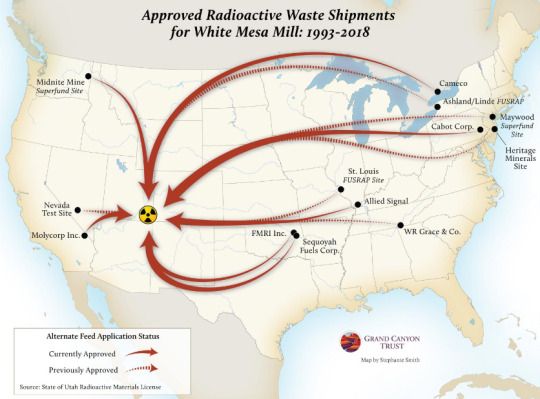
hmmm.
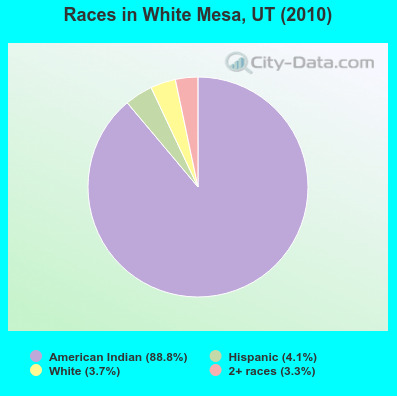
hmm very incheresting.
news from 25 April 2020:

‘A long-anticipated Trump administration report aimed to “revive and strengthen the uranium mining industry” was released Thursday [23 April 2020], and if its recommendations are implemented, it could provide direct government support for uranium production in San Juan County where the country’s last conventional uranium mill and several idled mines are located. Uranium companies applauded the plan within hours of its release while numerous conservation groups and Native American tribal leaders announced opposition. [...] Residents of the Ute Mountain Ute community of White Mesa, which is located several miles south of Energy Fuels’ White Mesa Mill, have long worried that groundwater contamination around the mill site could worsen and eventually reach its drinking water aquifer. The Ute Mountain Ute Environmental Programs Department sent a letter to the Utah Department of Environmental Quality in January pointing to “overwhelming data showing significant trends of increasing groundwater contaminants and acidification” below the mill site [...].’ [Source: Zak Podmore. “ Trump administration plan could revive the uranium industry in Utah, raising concerns from conservationists.” The Salt Lake Tribune. 25 April 2020.]
it works likes this:
(1) steal the “valuable” uranium from the Four Corners. (2) leave radioactive waste behind, contaminated soil, dead streams, giant open pit mines, cancer, aching bones, hair and teeth loss, etc. (3) then export the uranium across the US, make Big Money. (4) share none of the wealth with tribes of the Four Corners region, where many don’t have access to electricity or drinking water. (5) and then at the end of the production chain, turn right back around and ship all of the radioactive waste right back the Four Corners where it can fester for thousands of years.
extreme insult added to injury.
take the uranium:
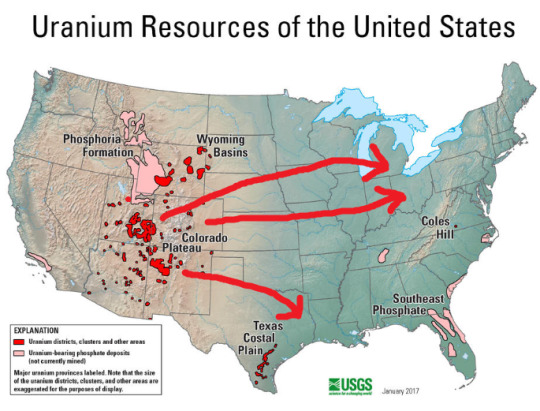

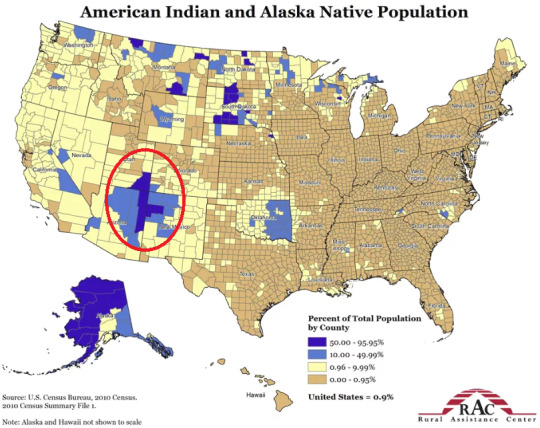
--
leave this behind:
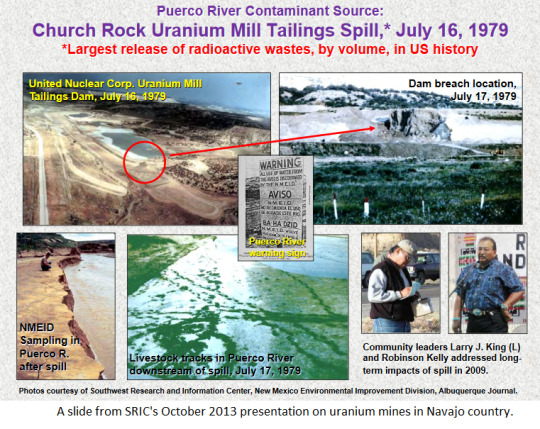
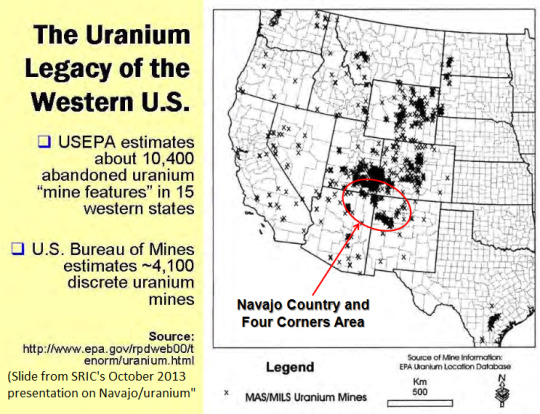

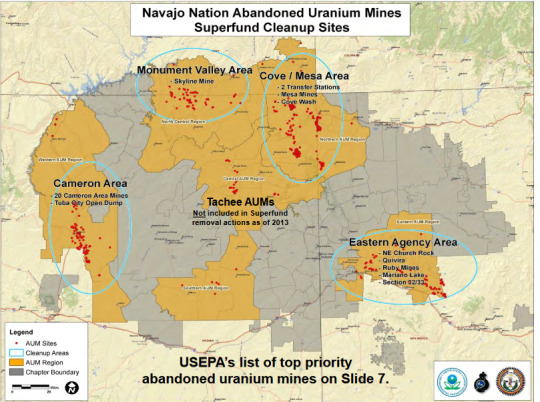


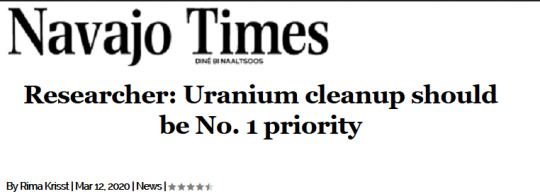
--
don’t share the “wealth”:

--
abandon them during pandemic:


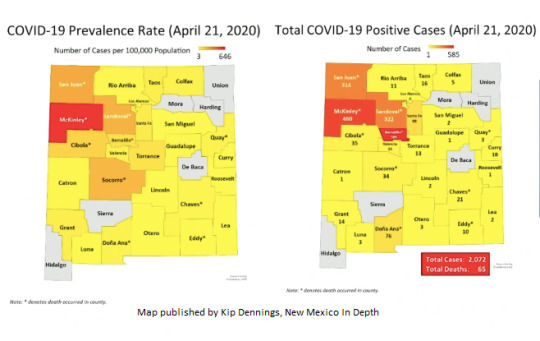

--
cherry on top. after uranium stolen and turned into profit, ship the waste right back to the source:

poison people, make your money, ship the toxic waste back to the victims
5K notes
·
View notes